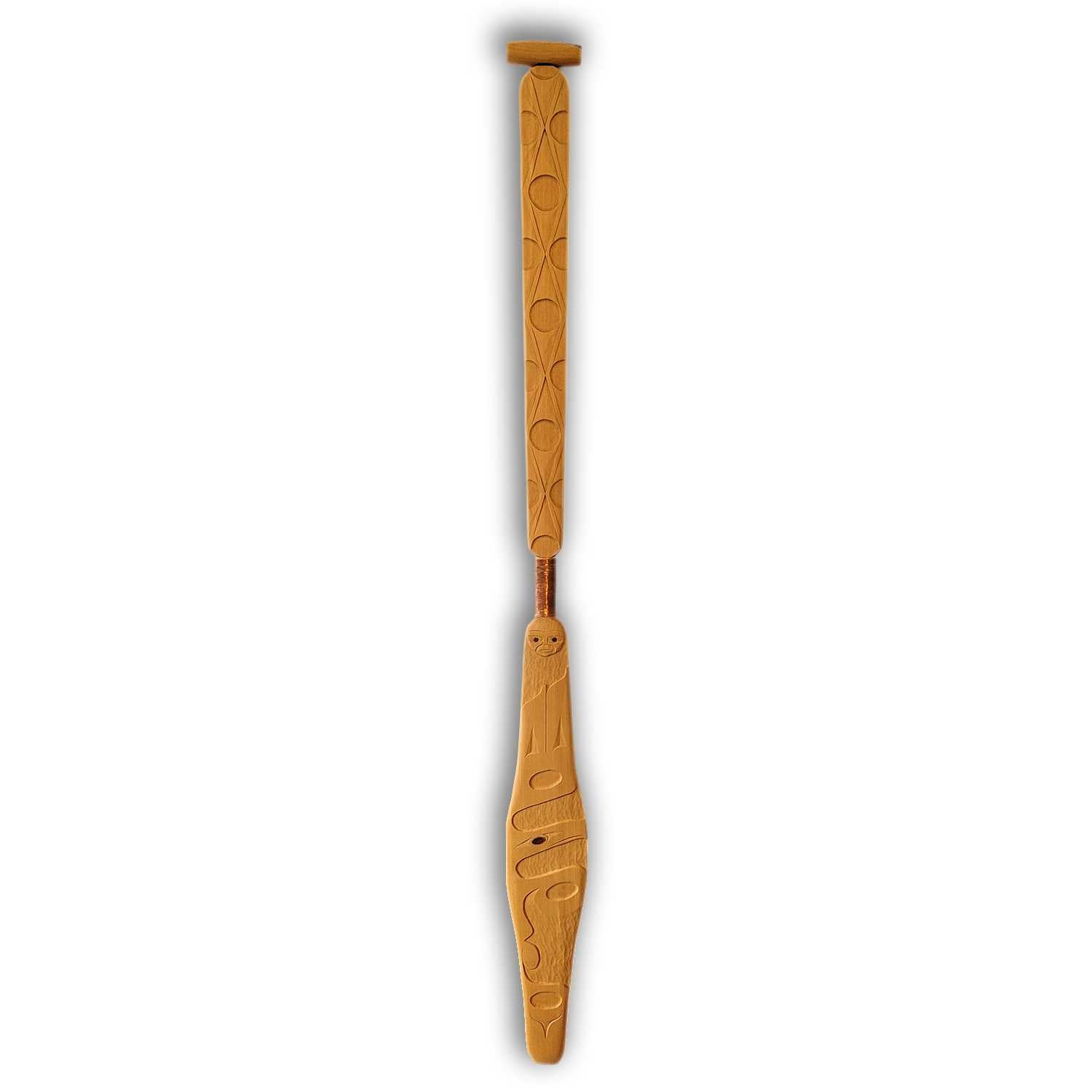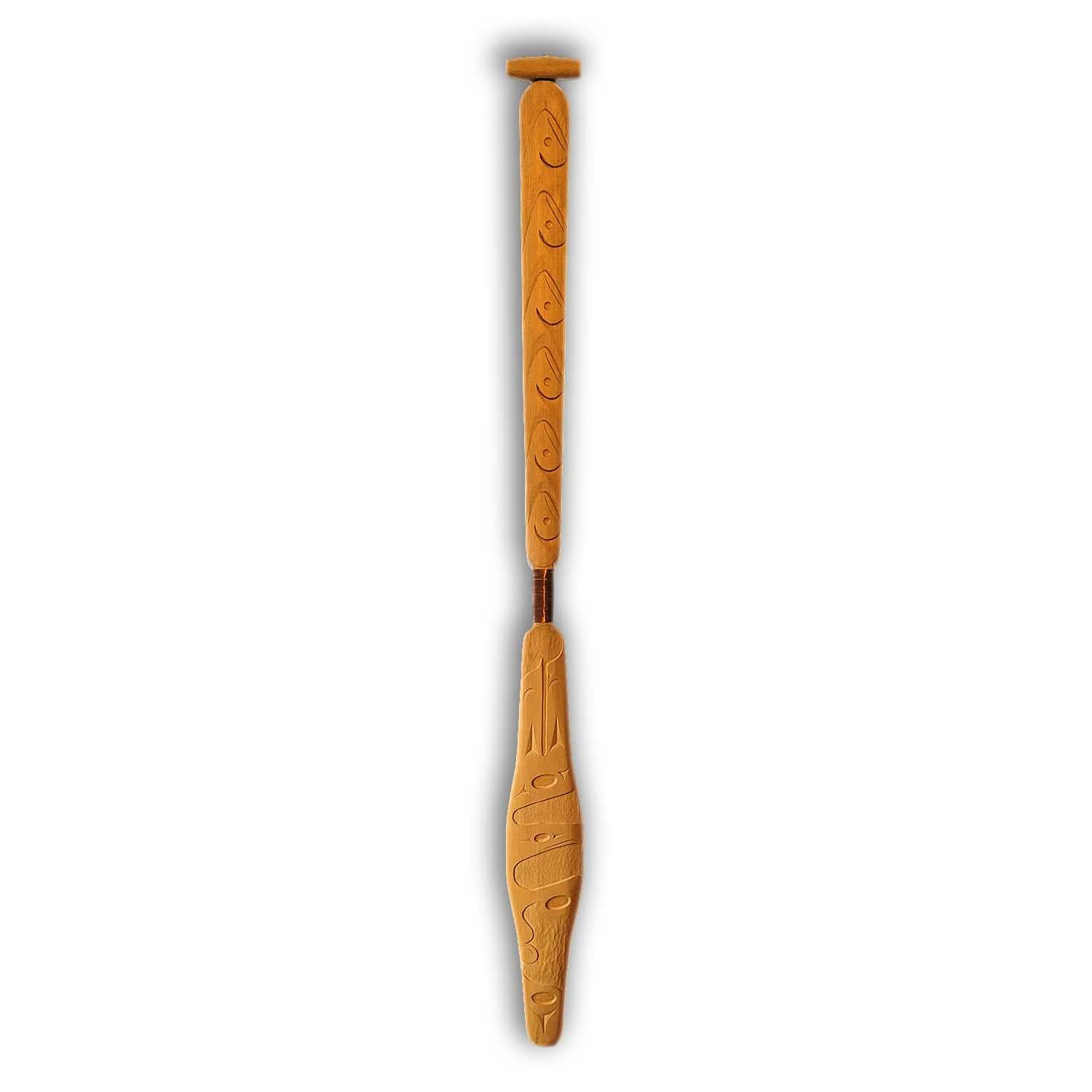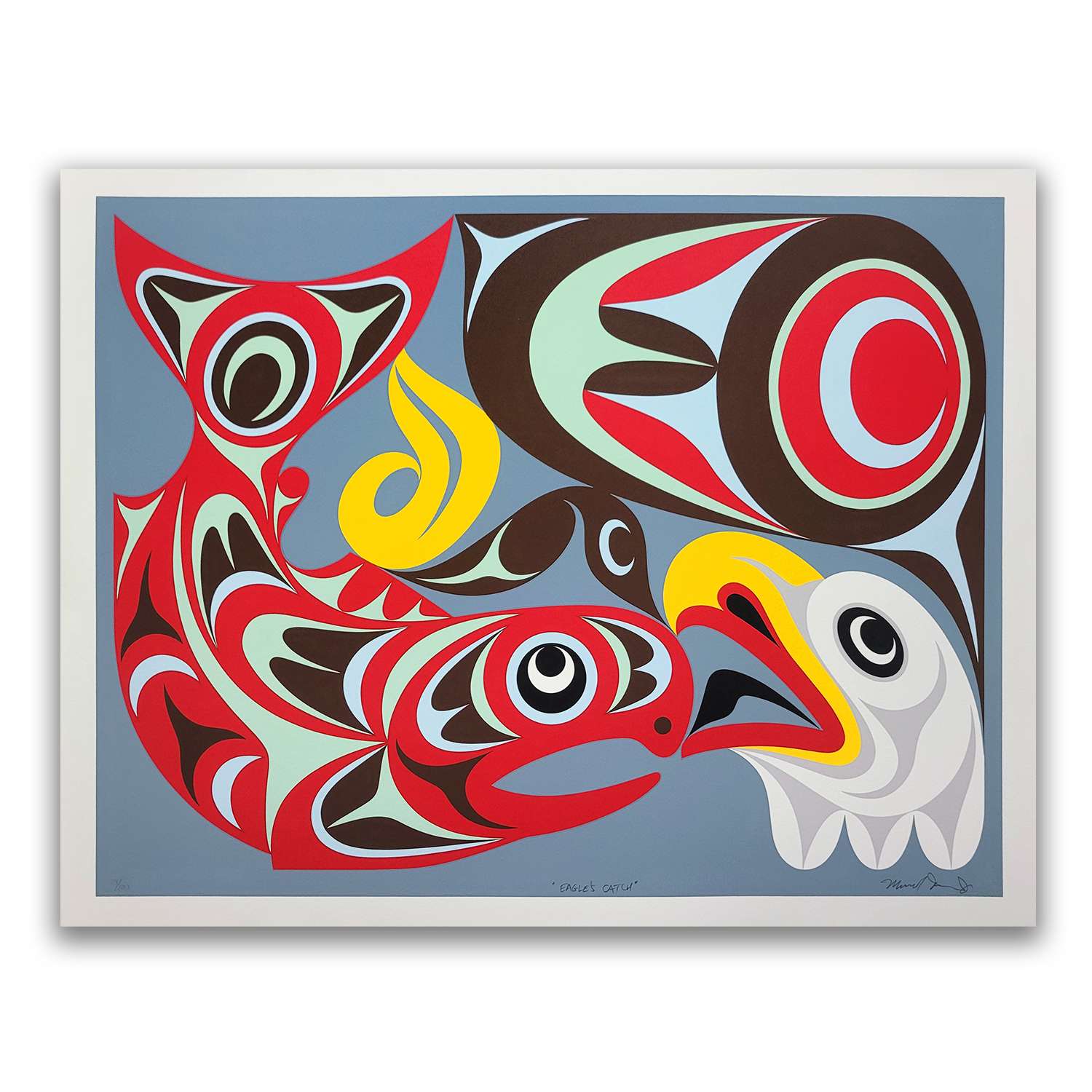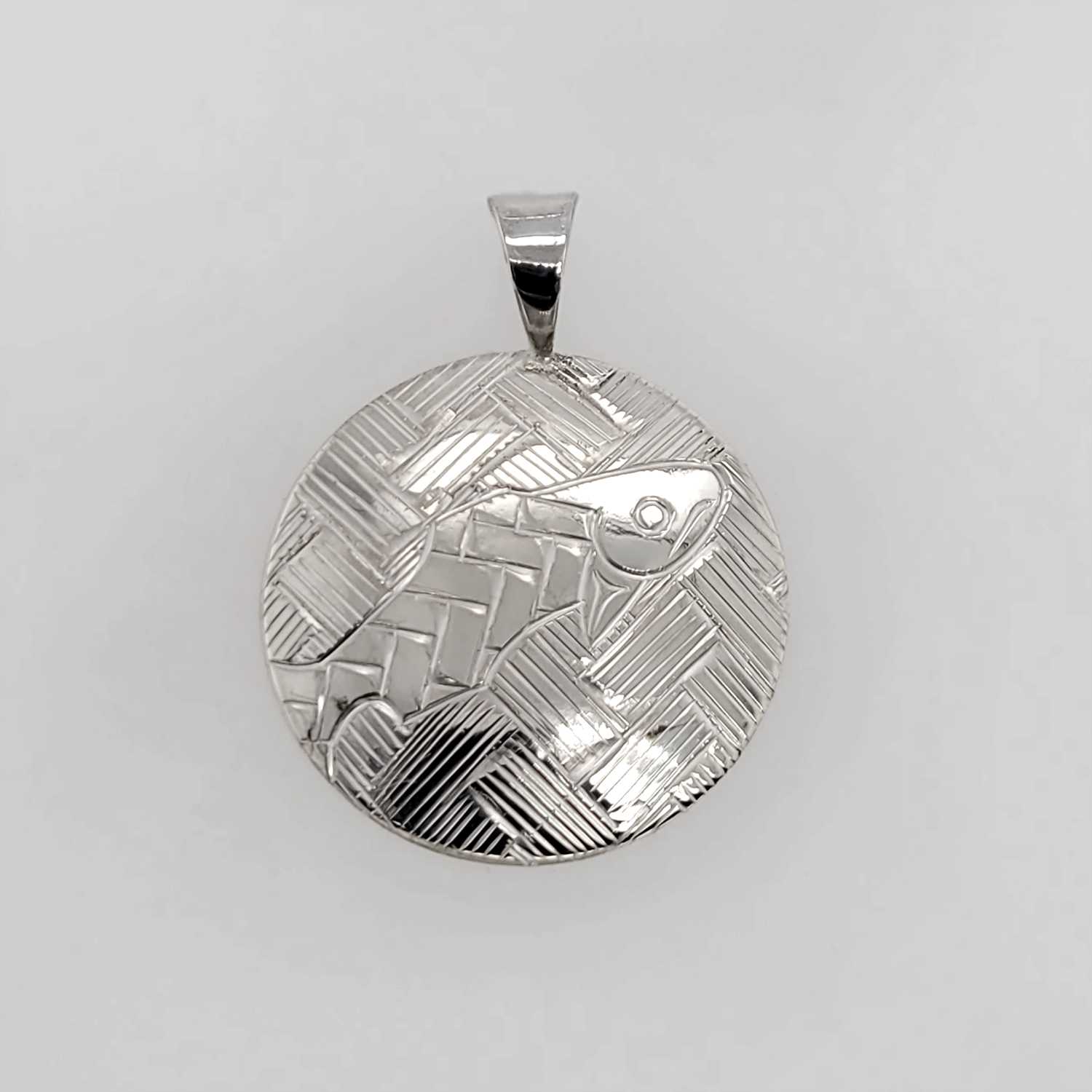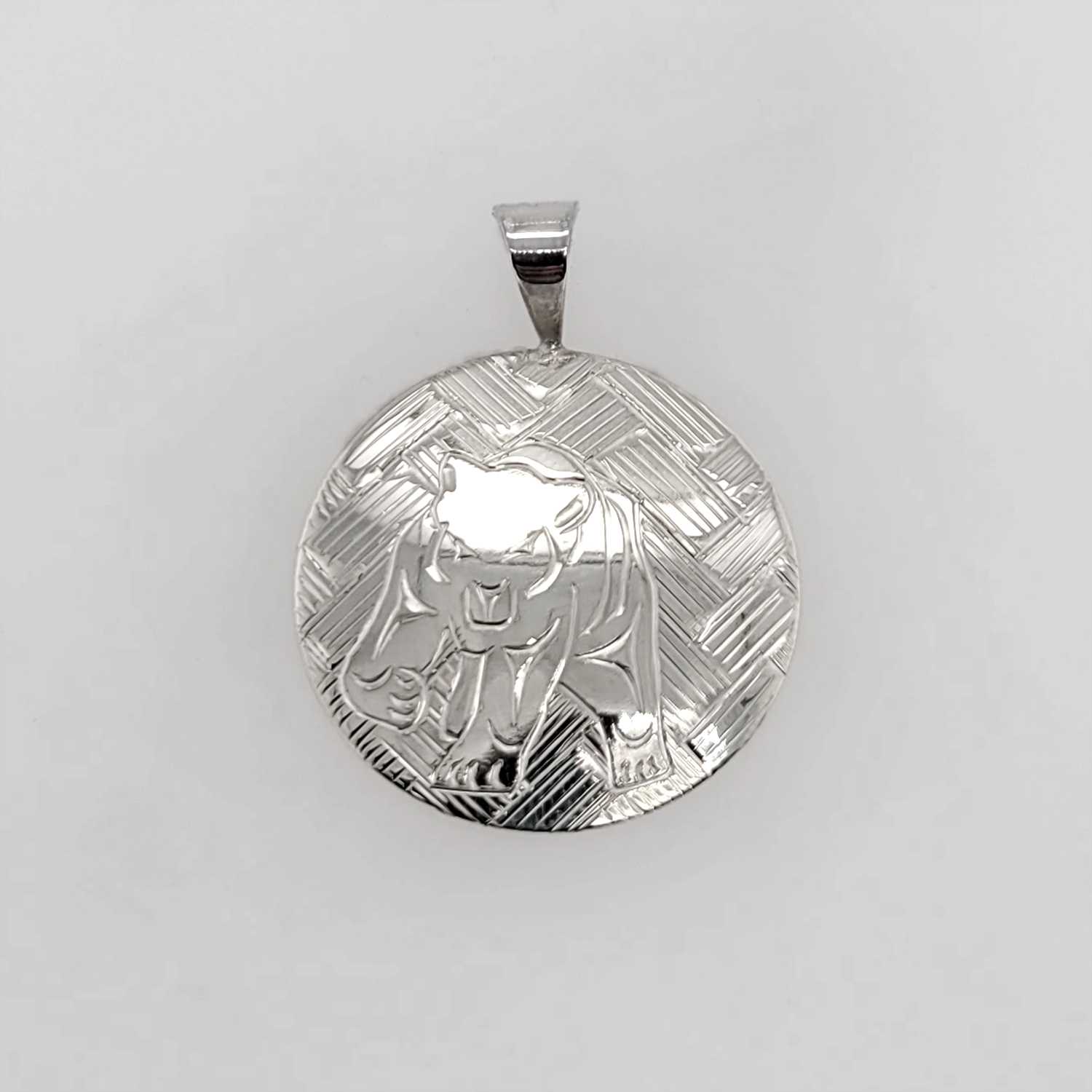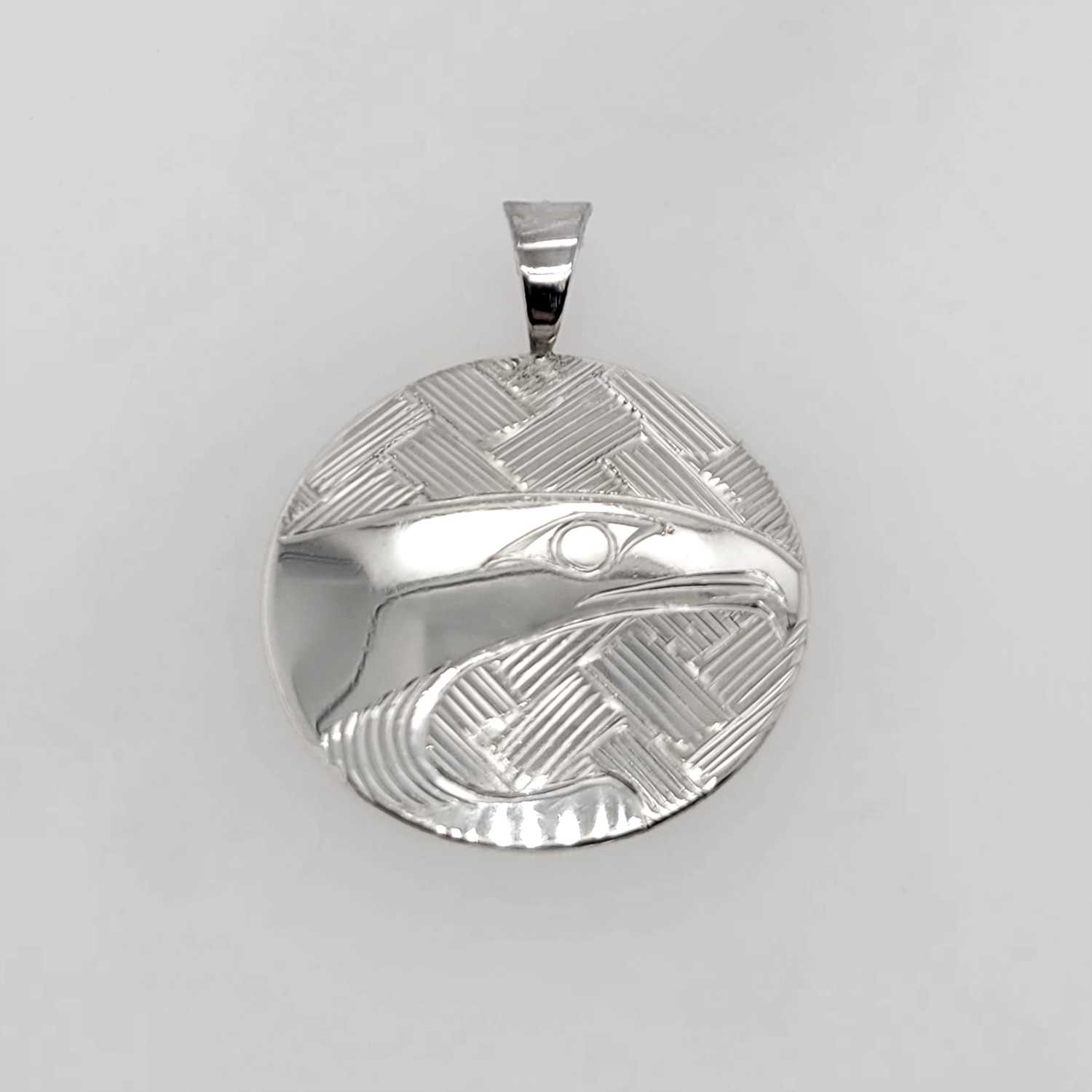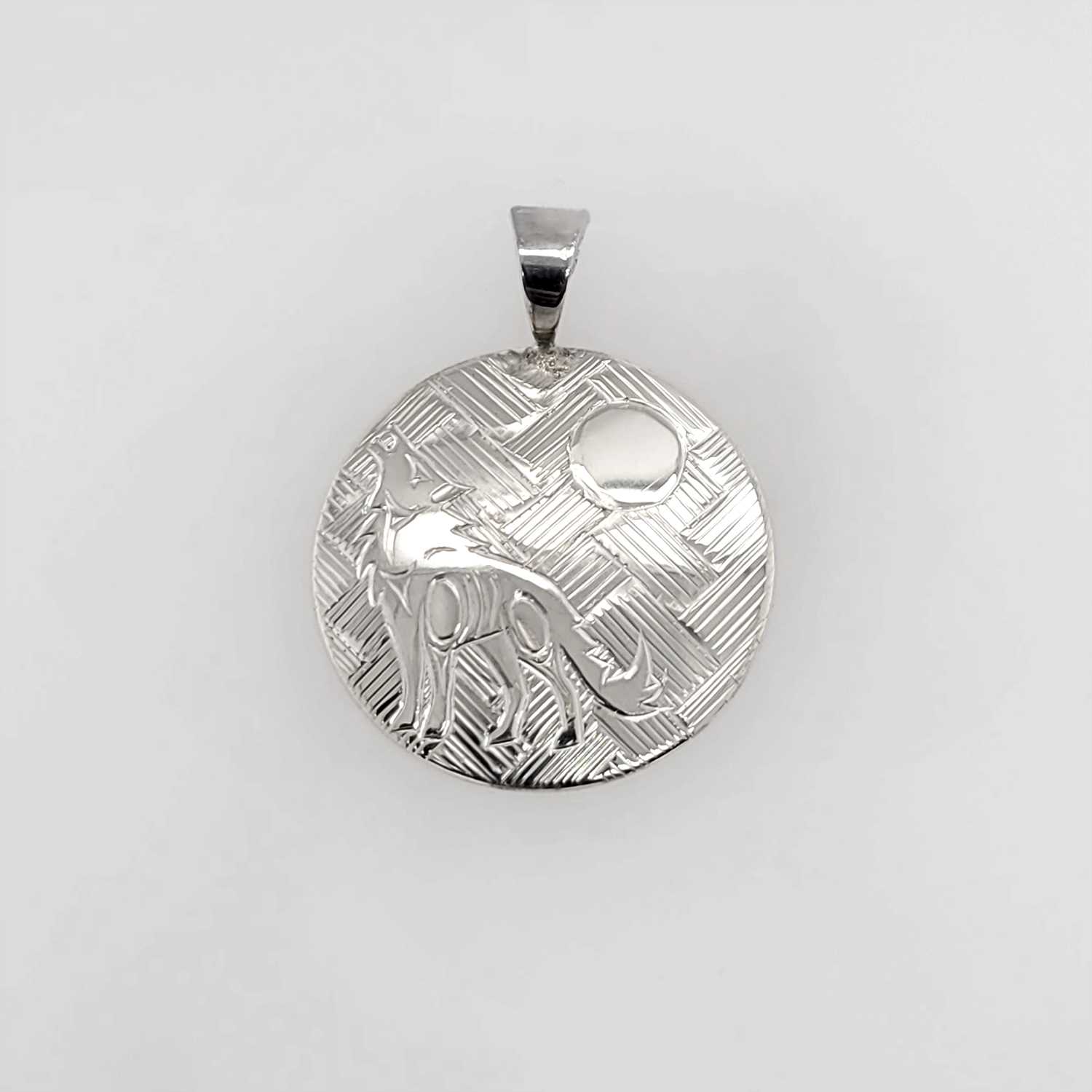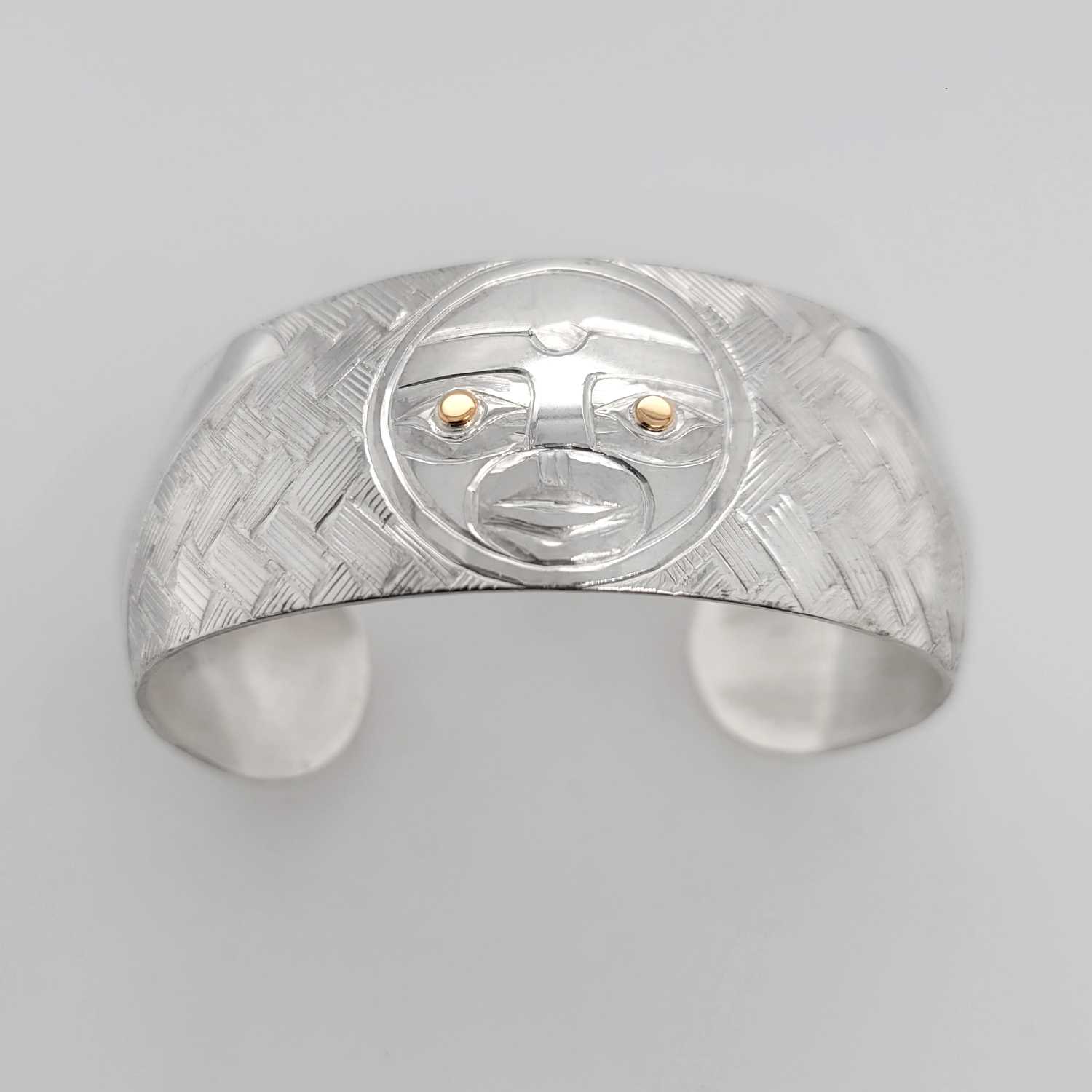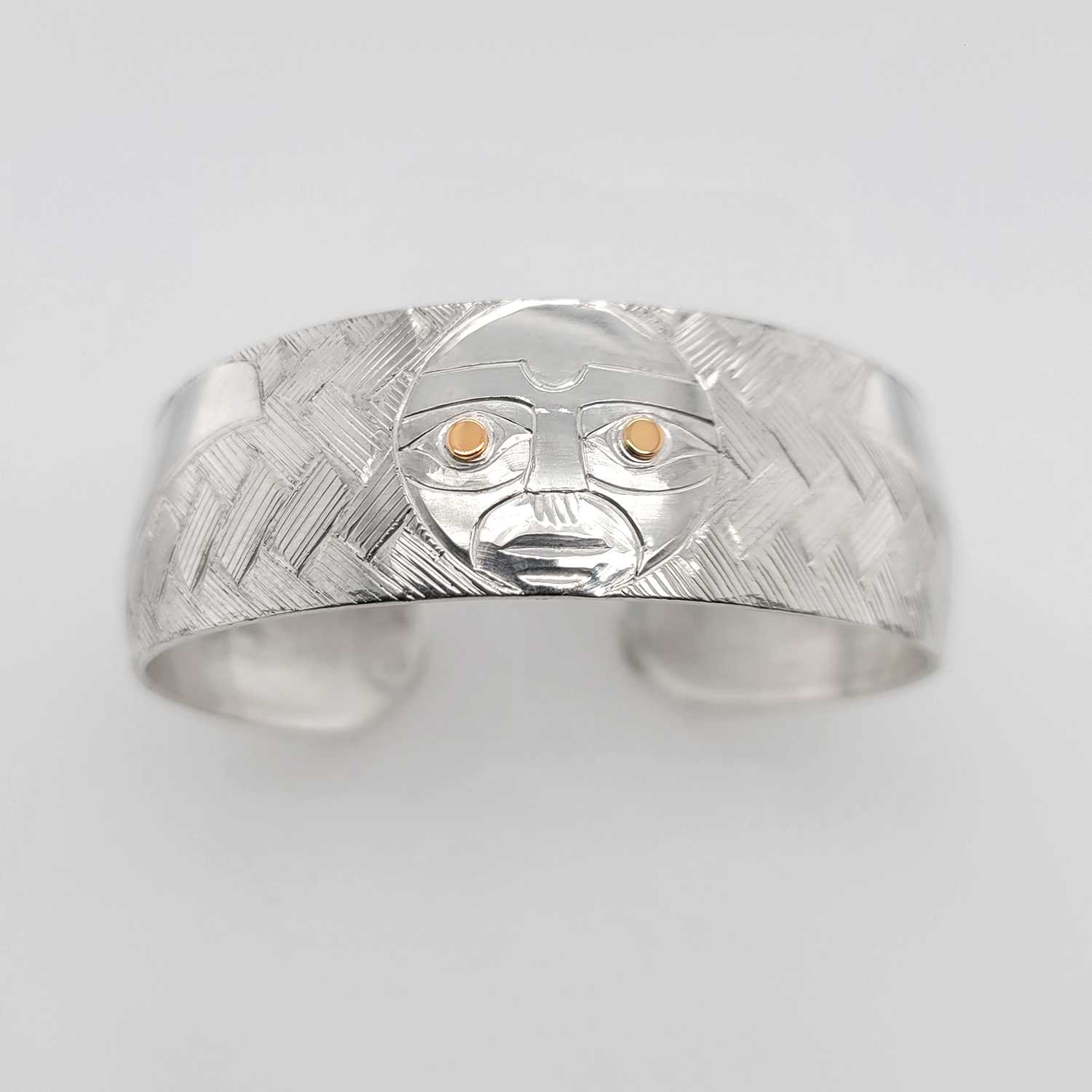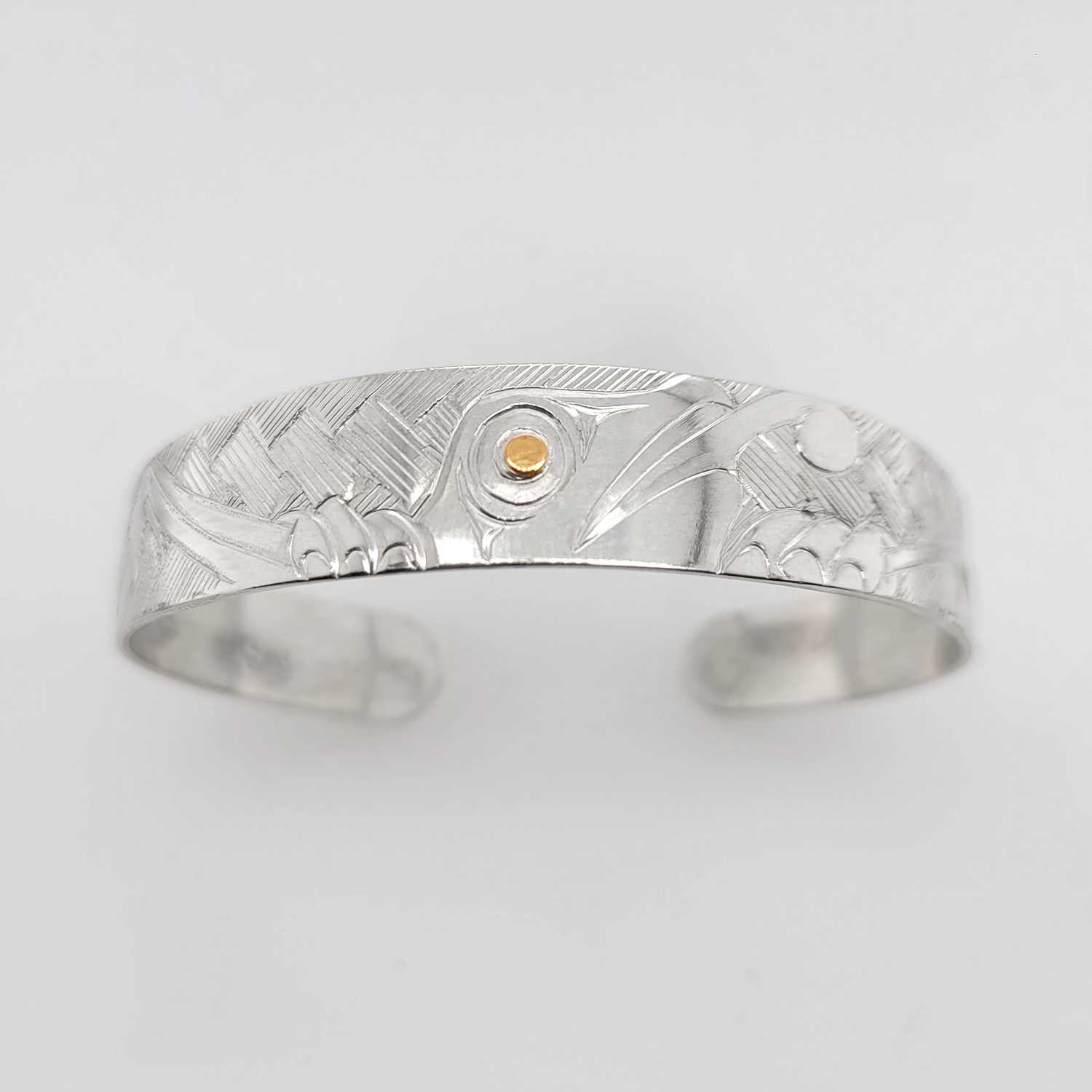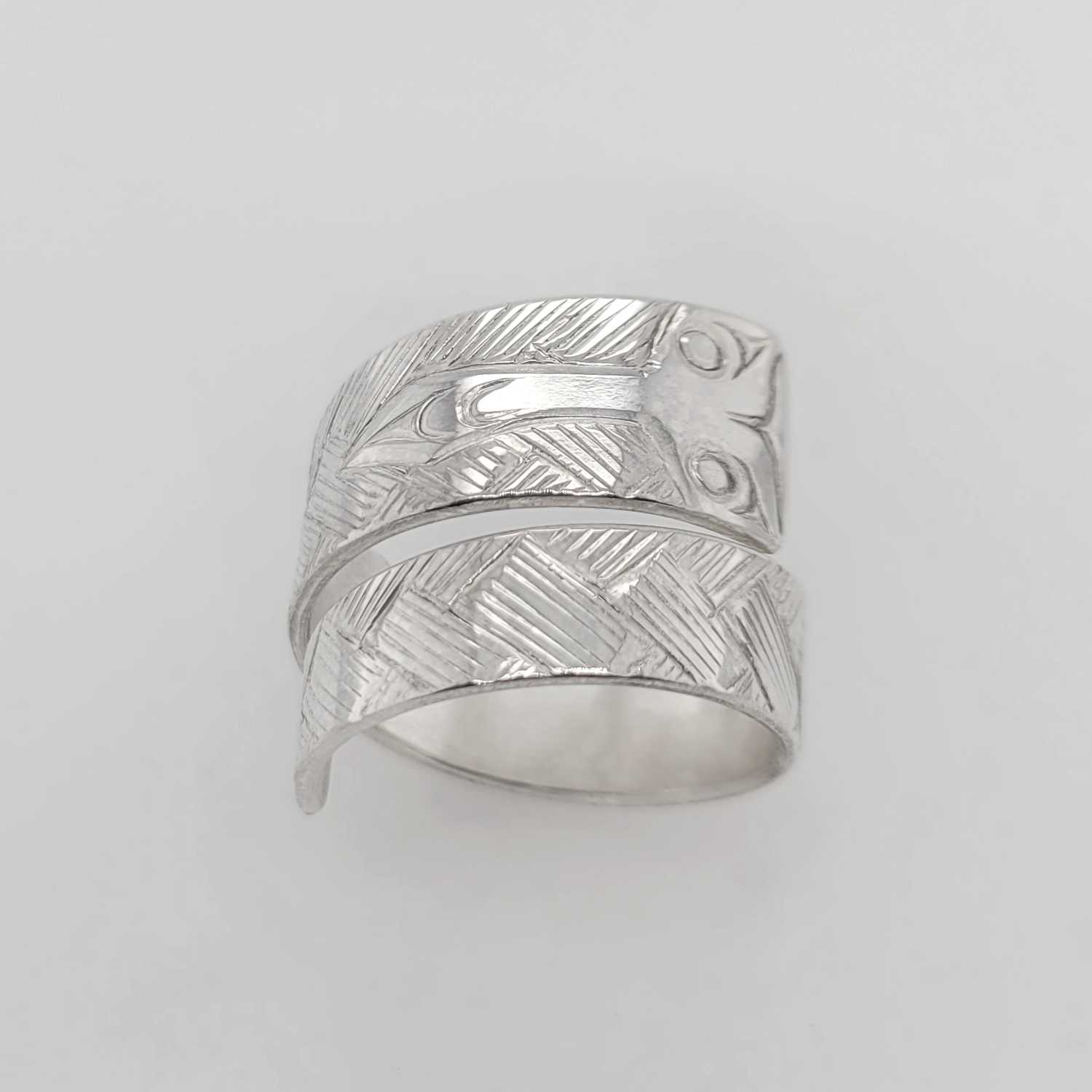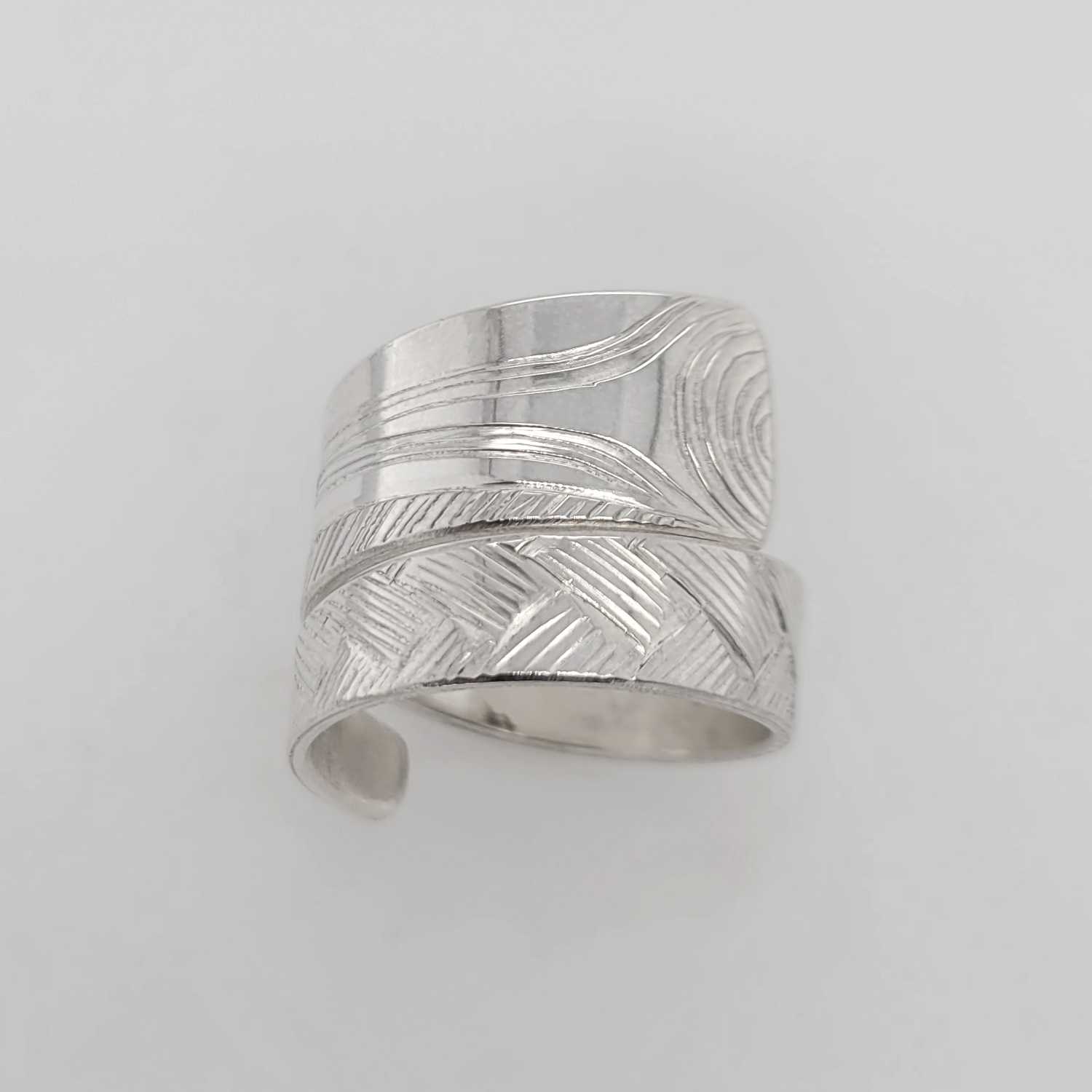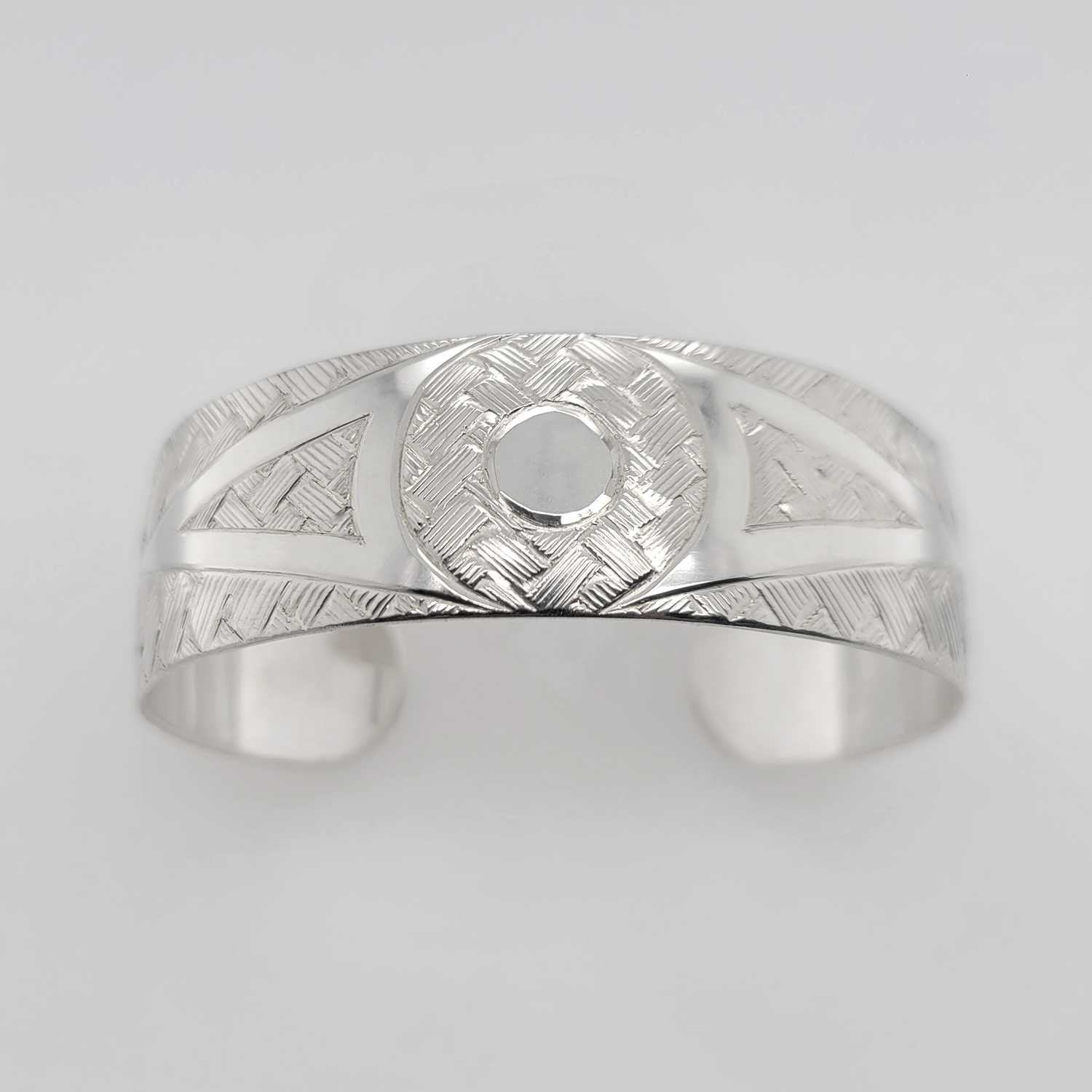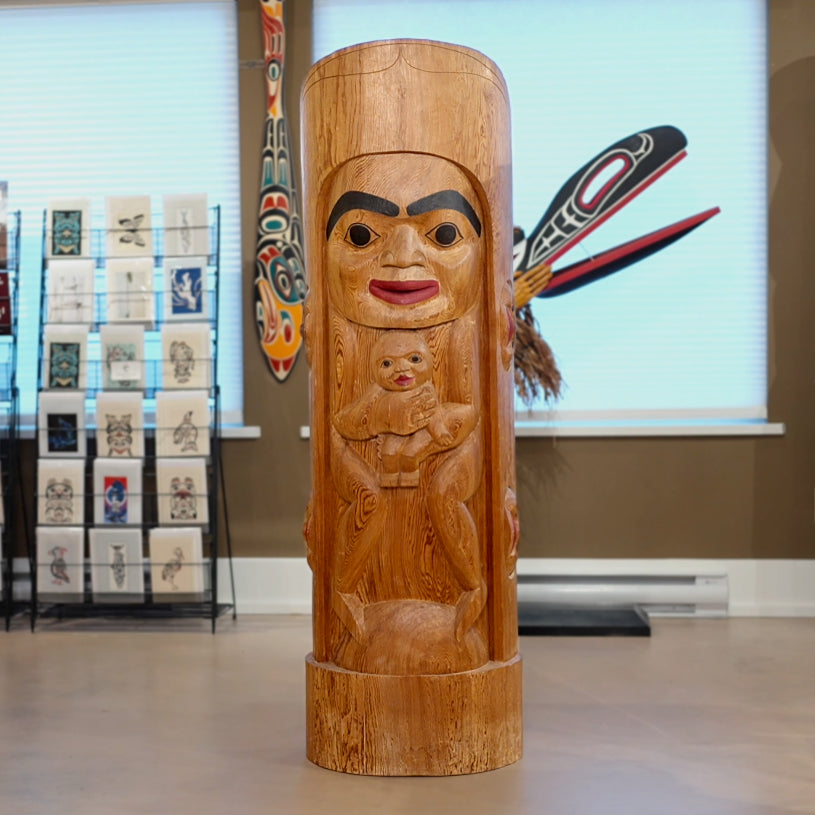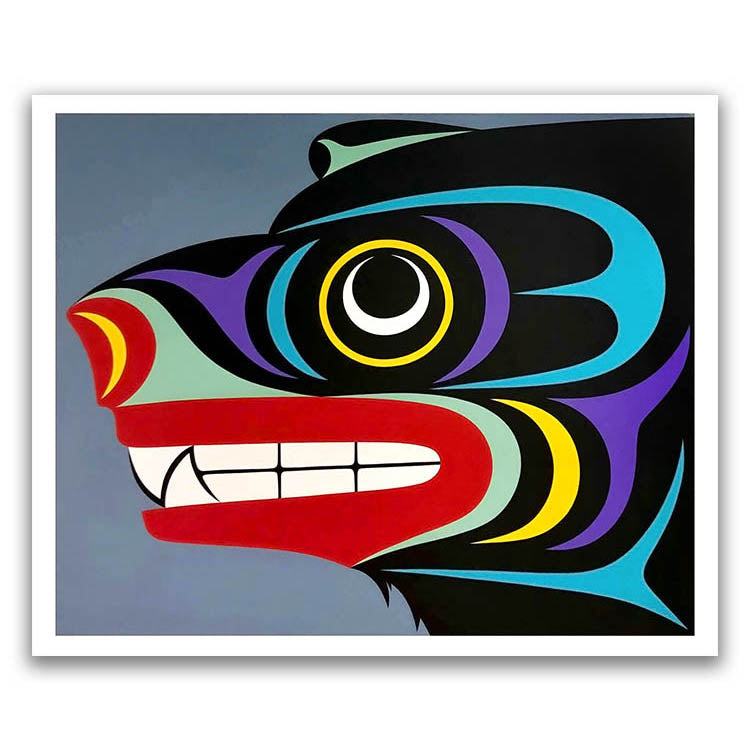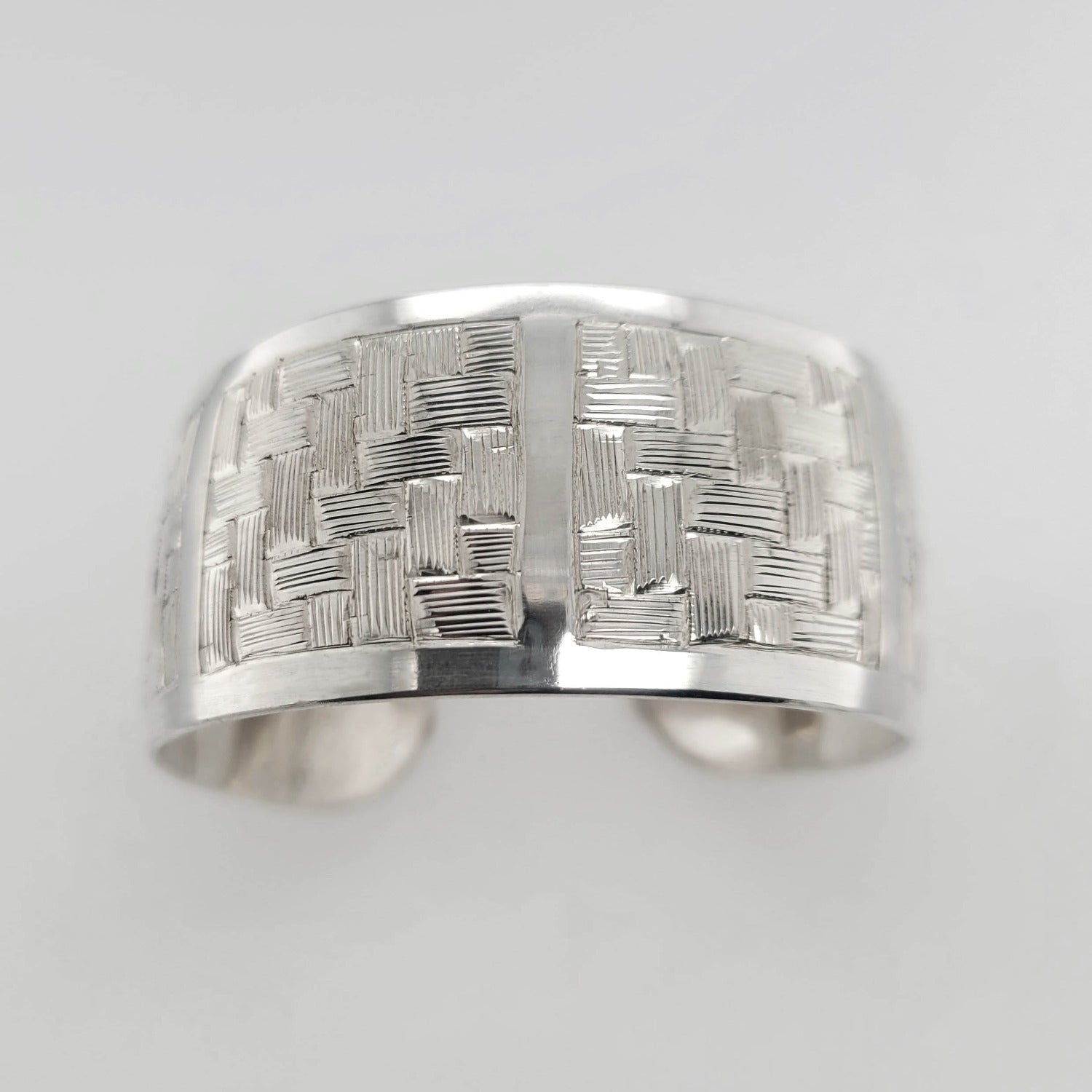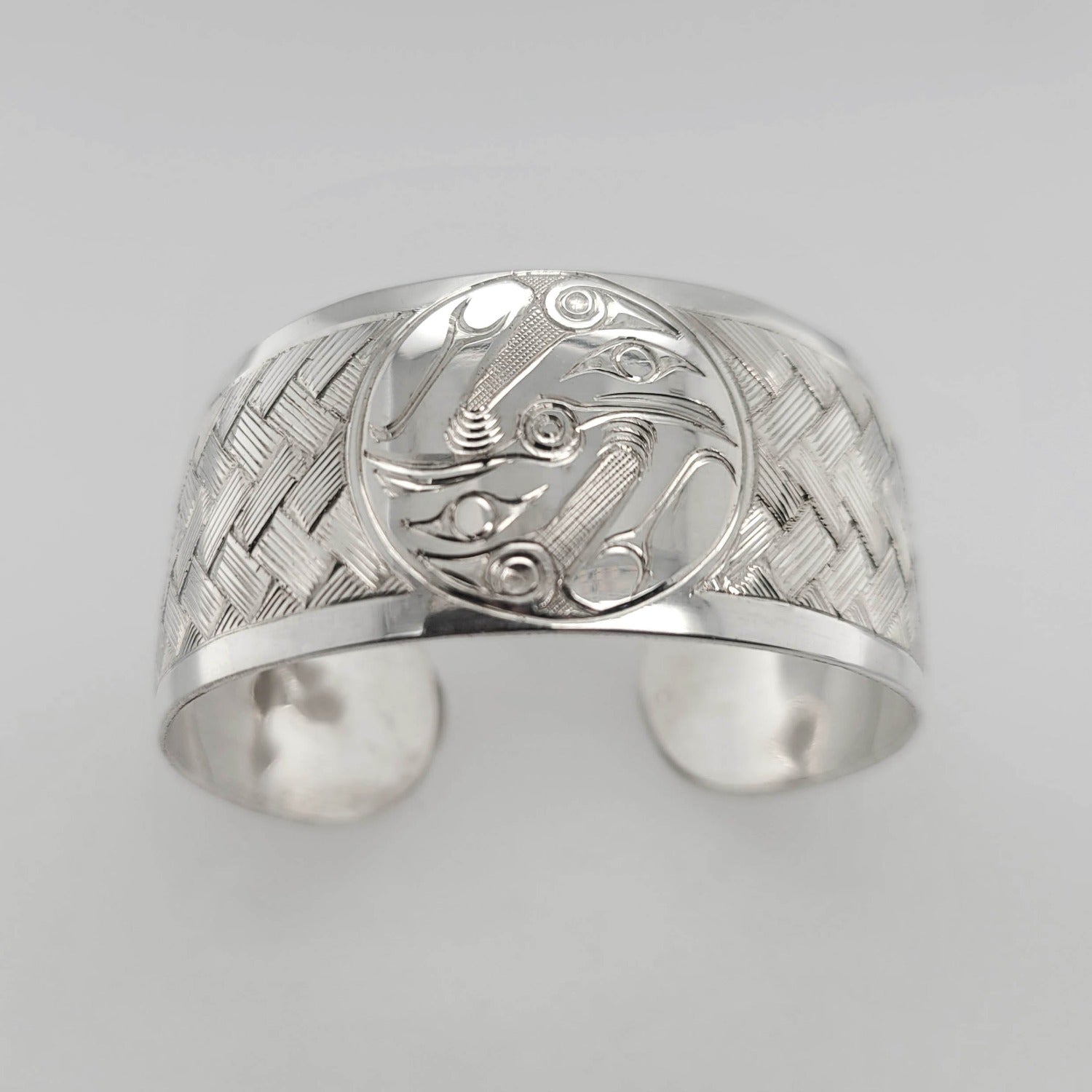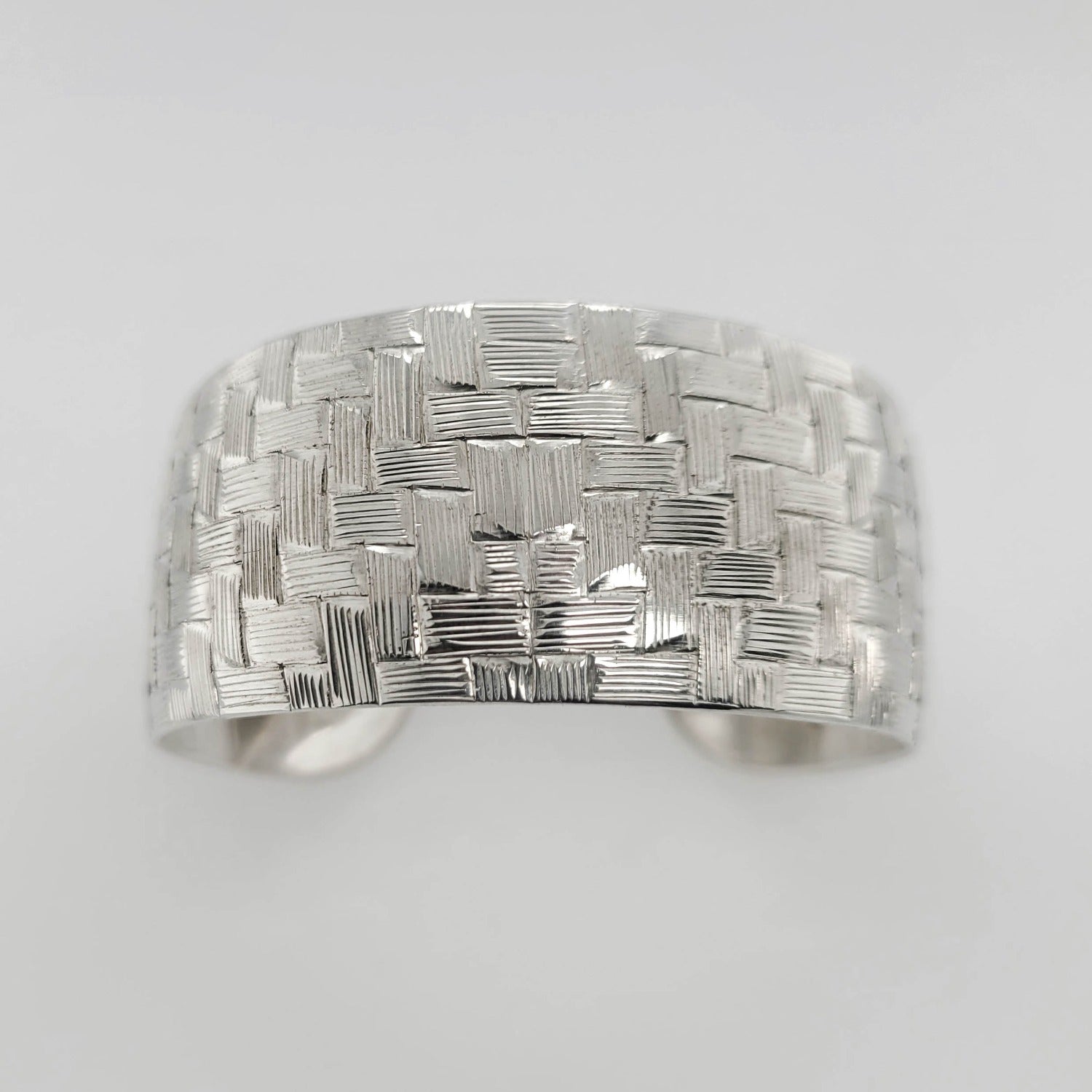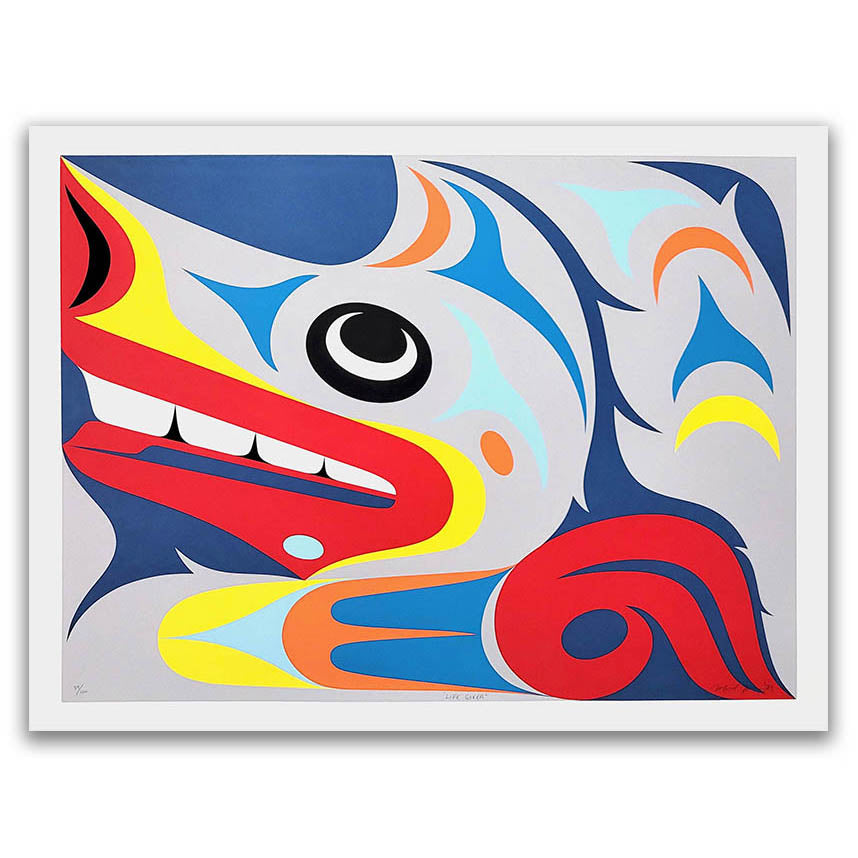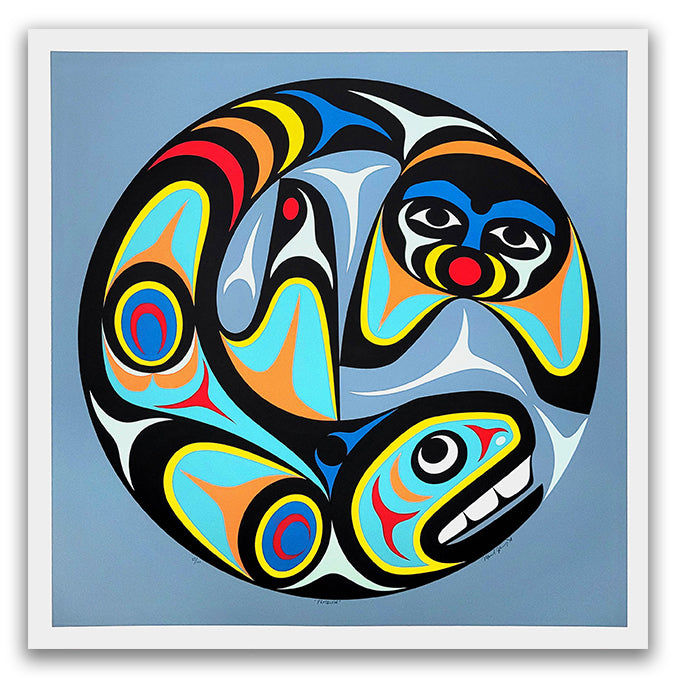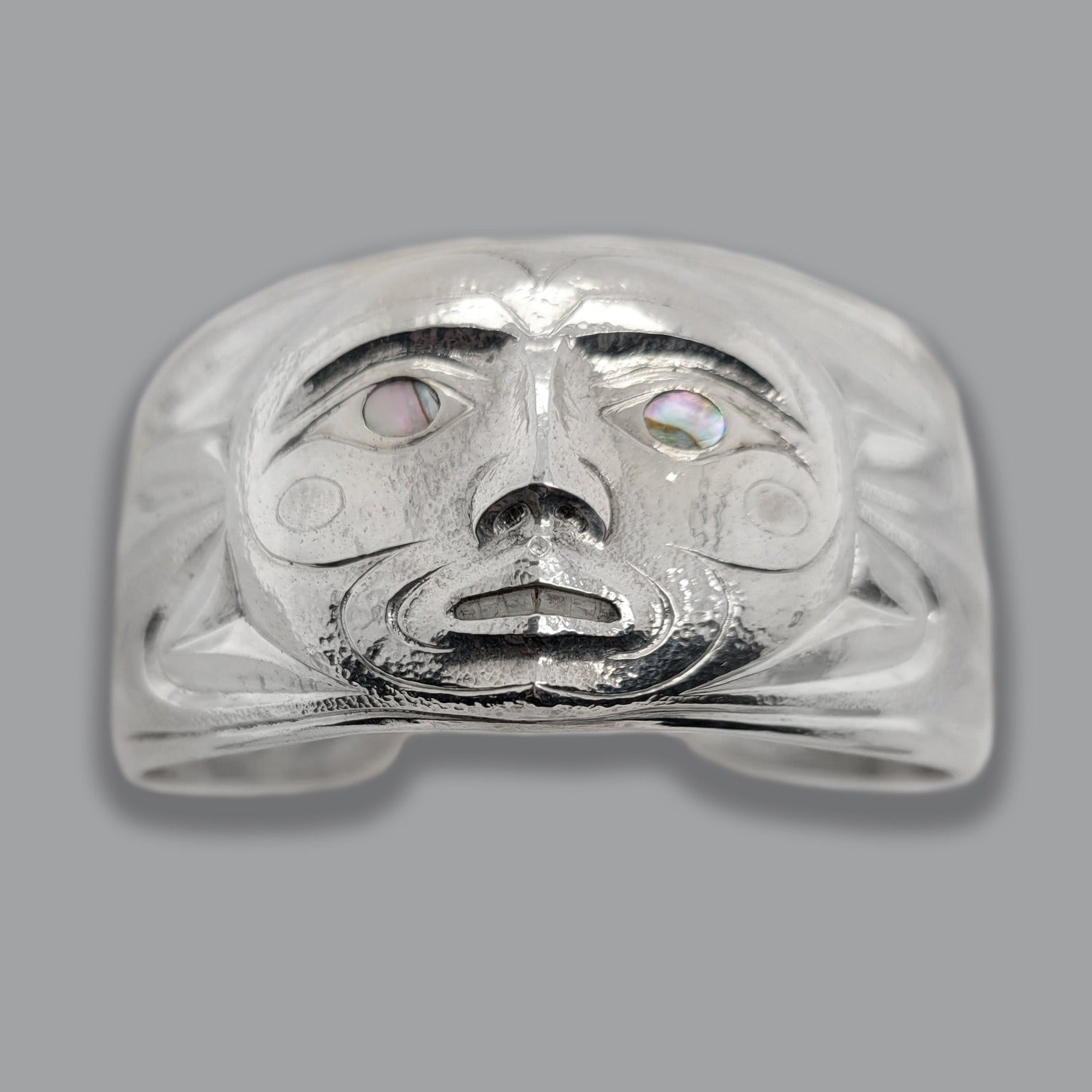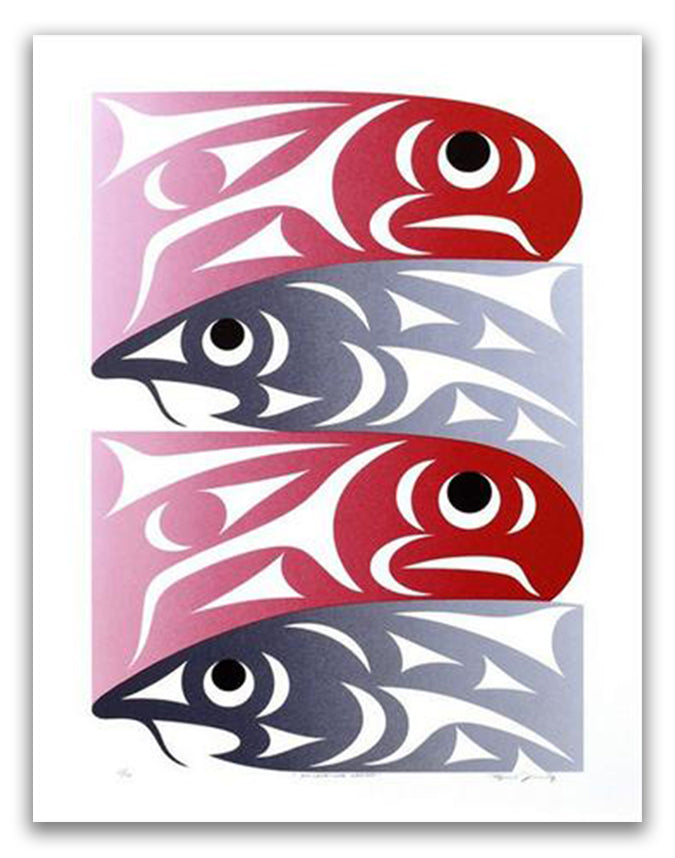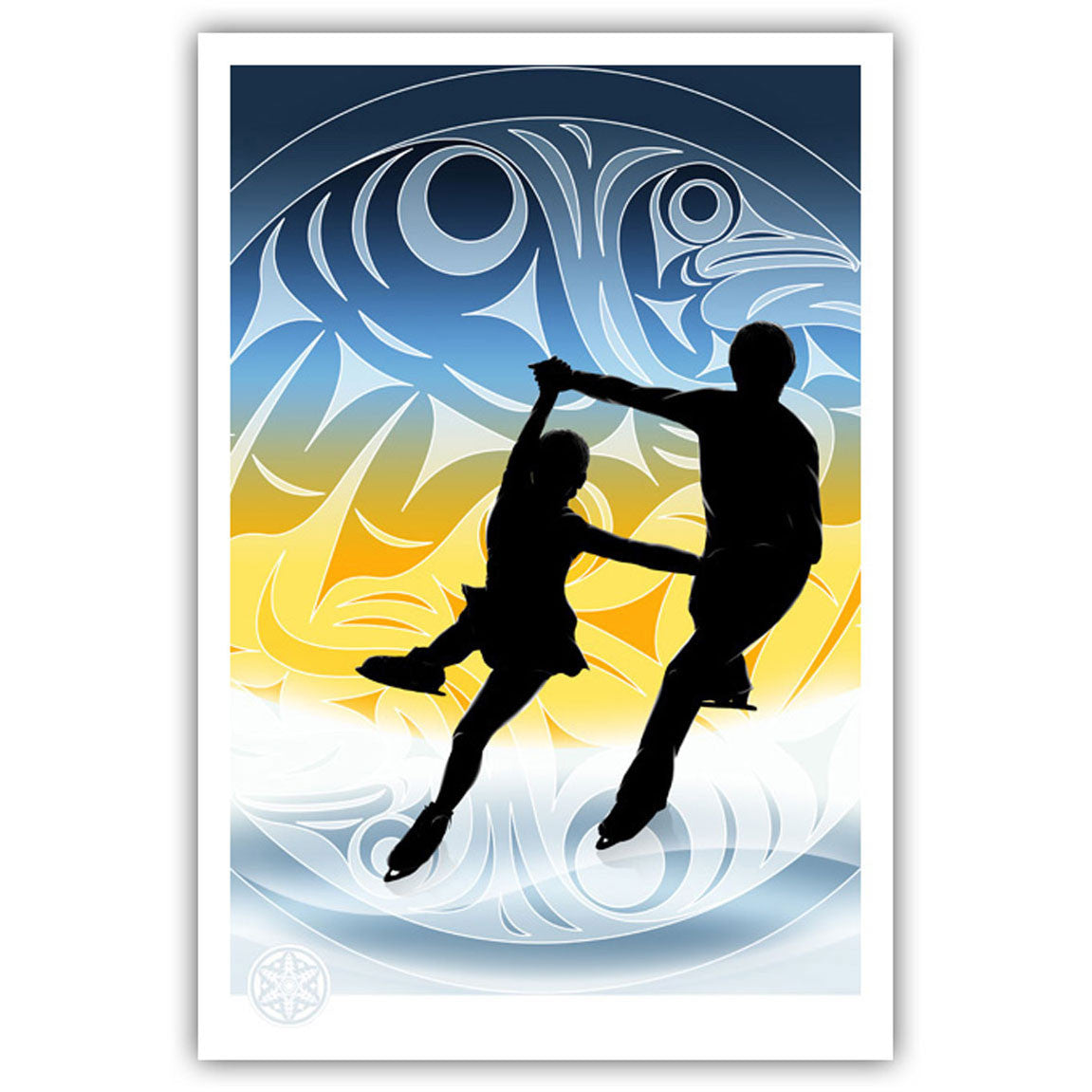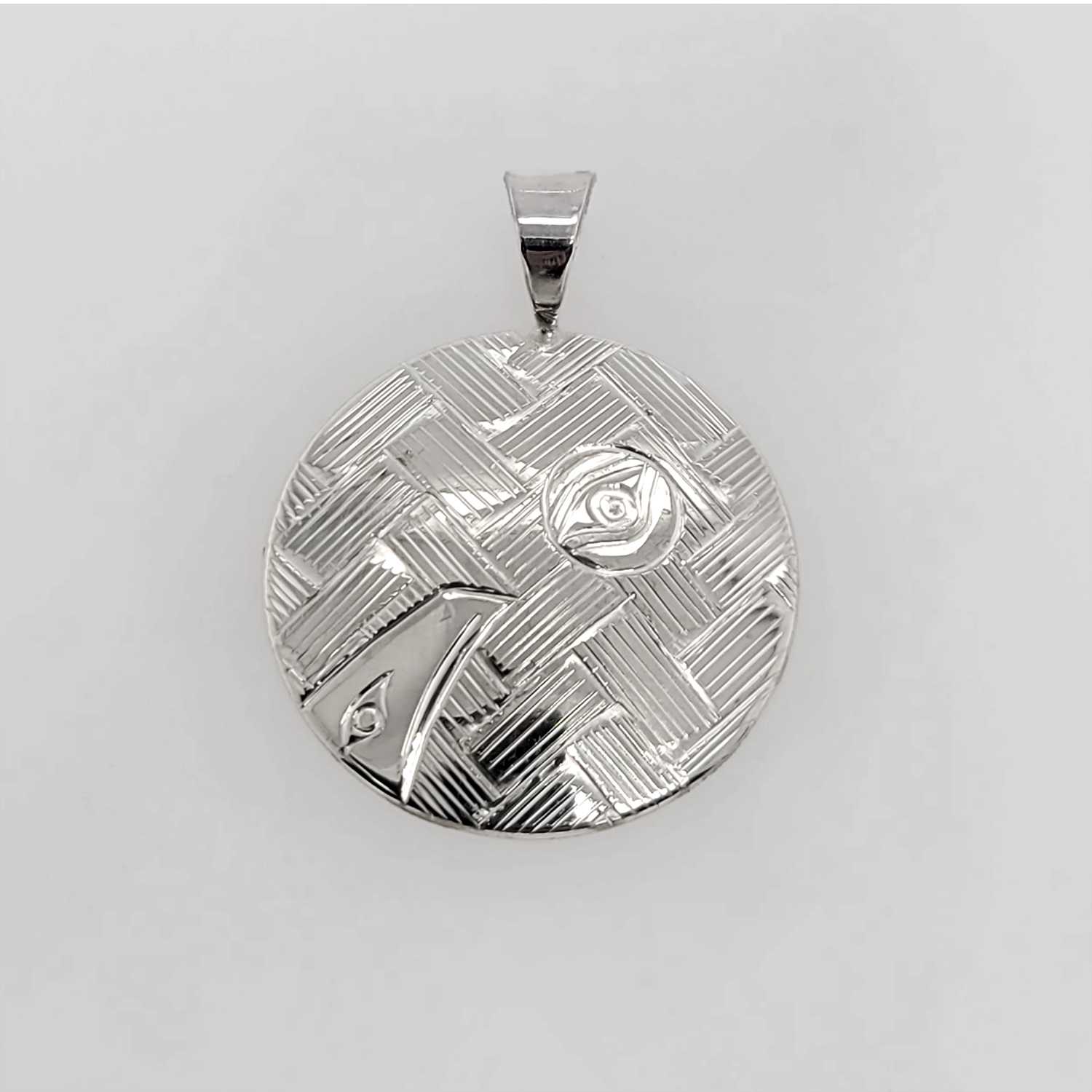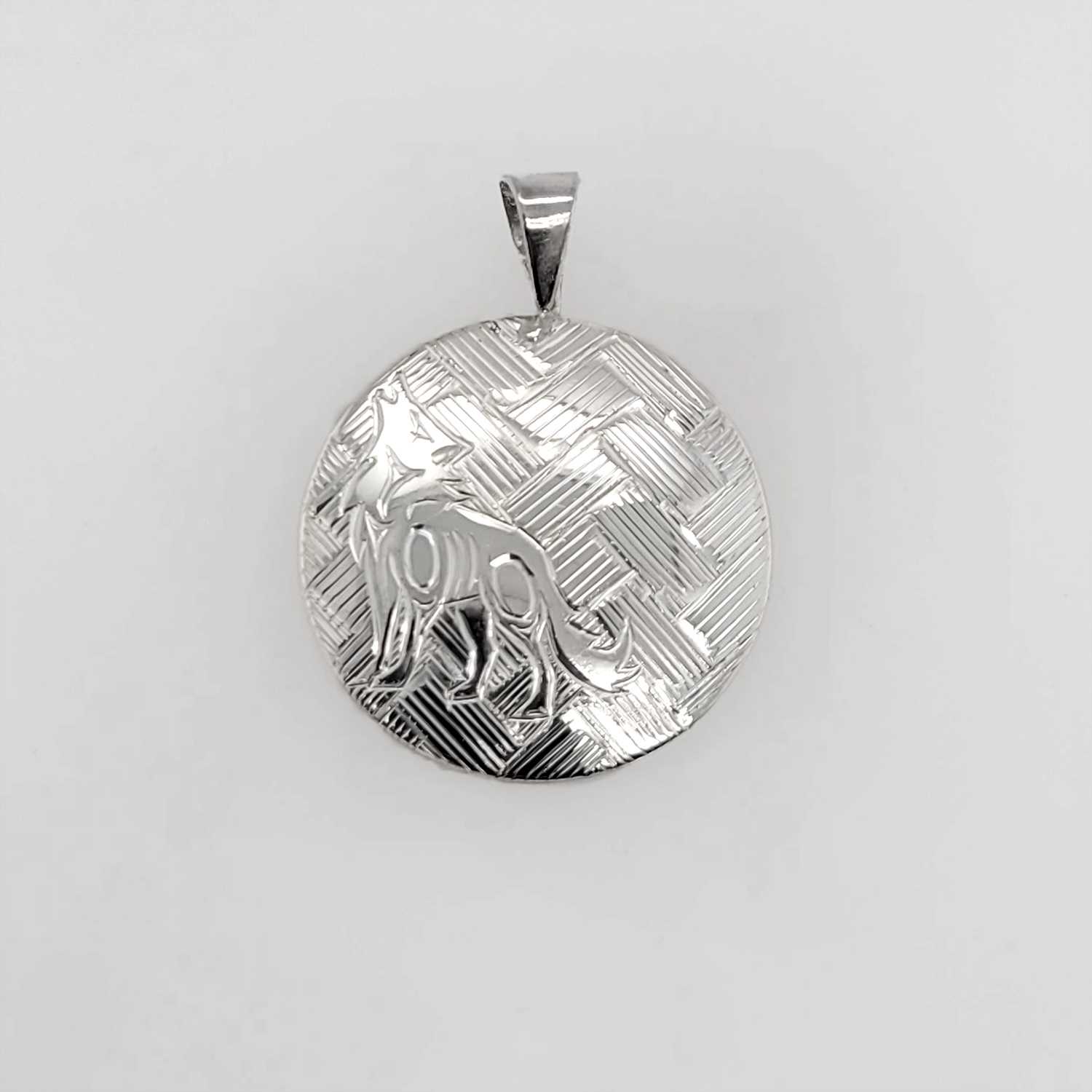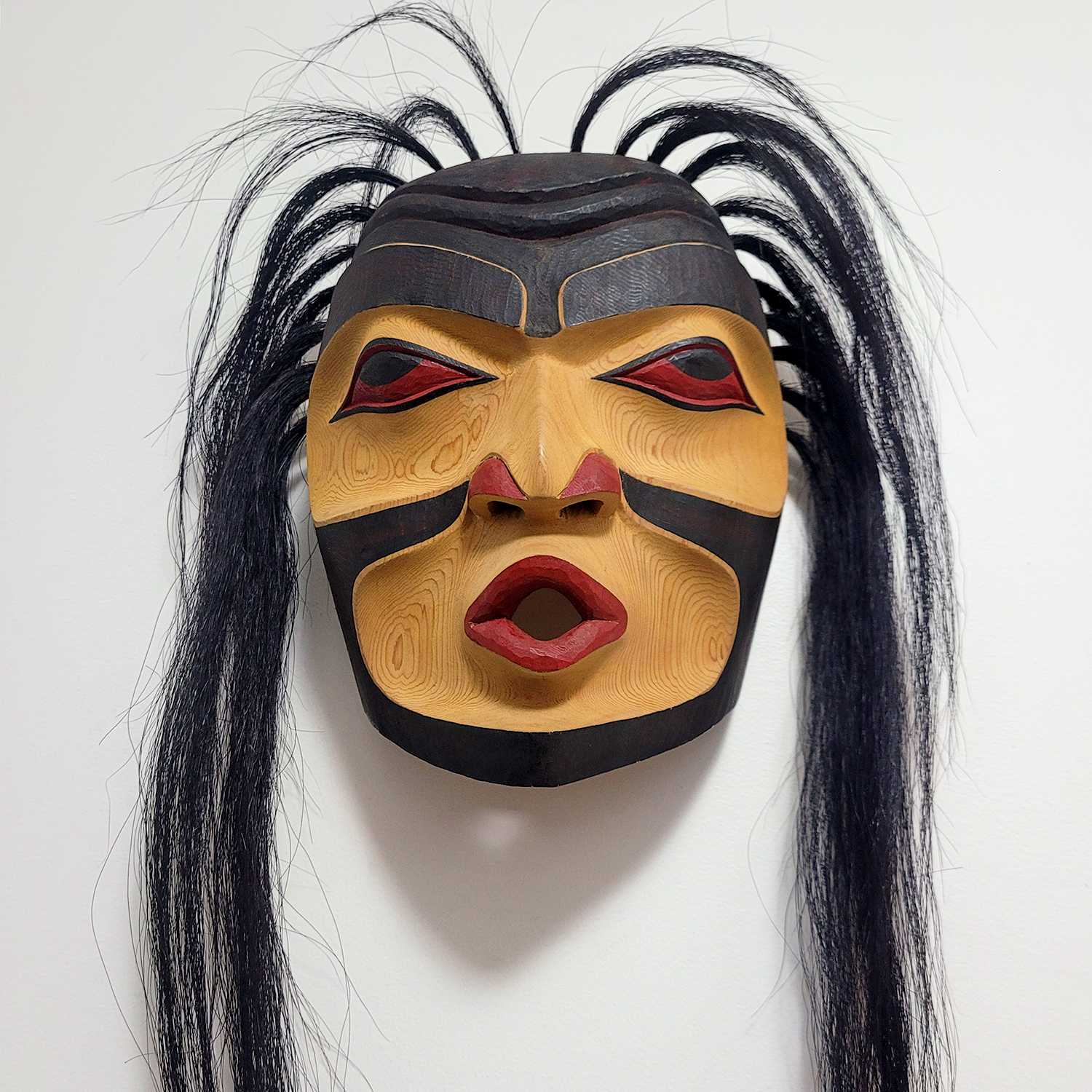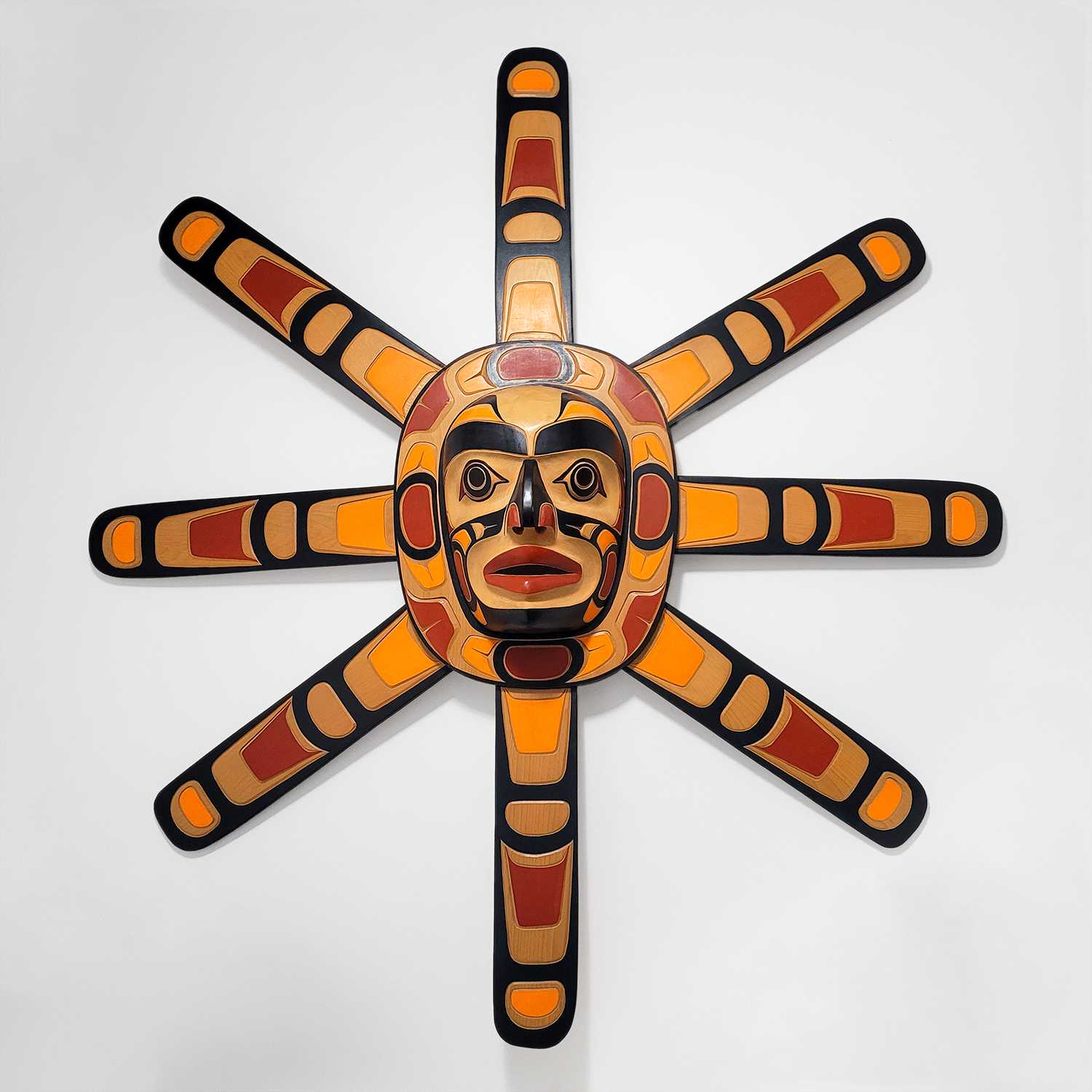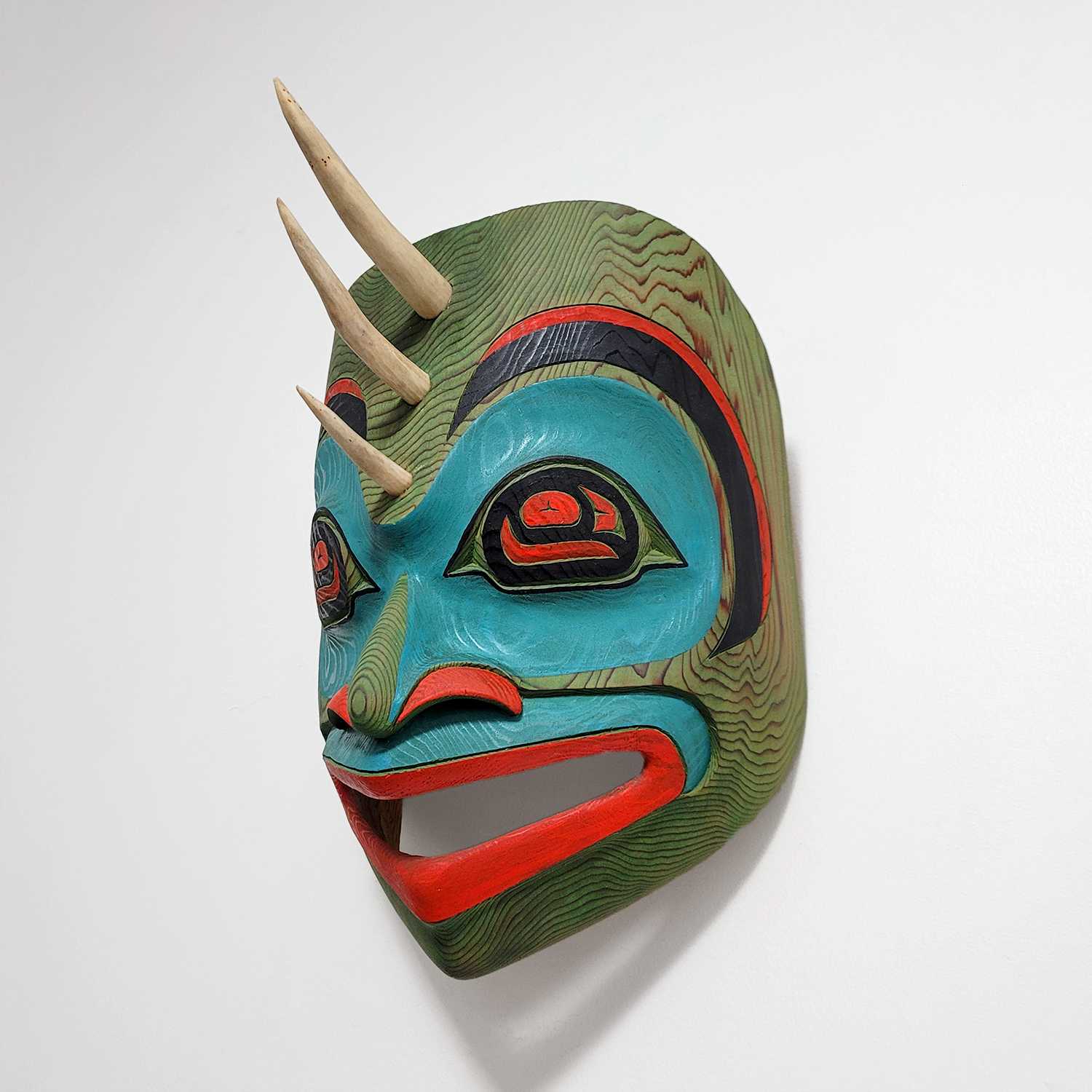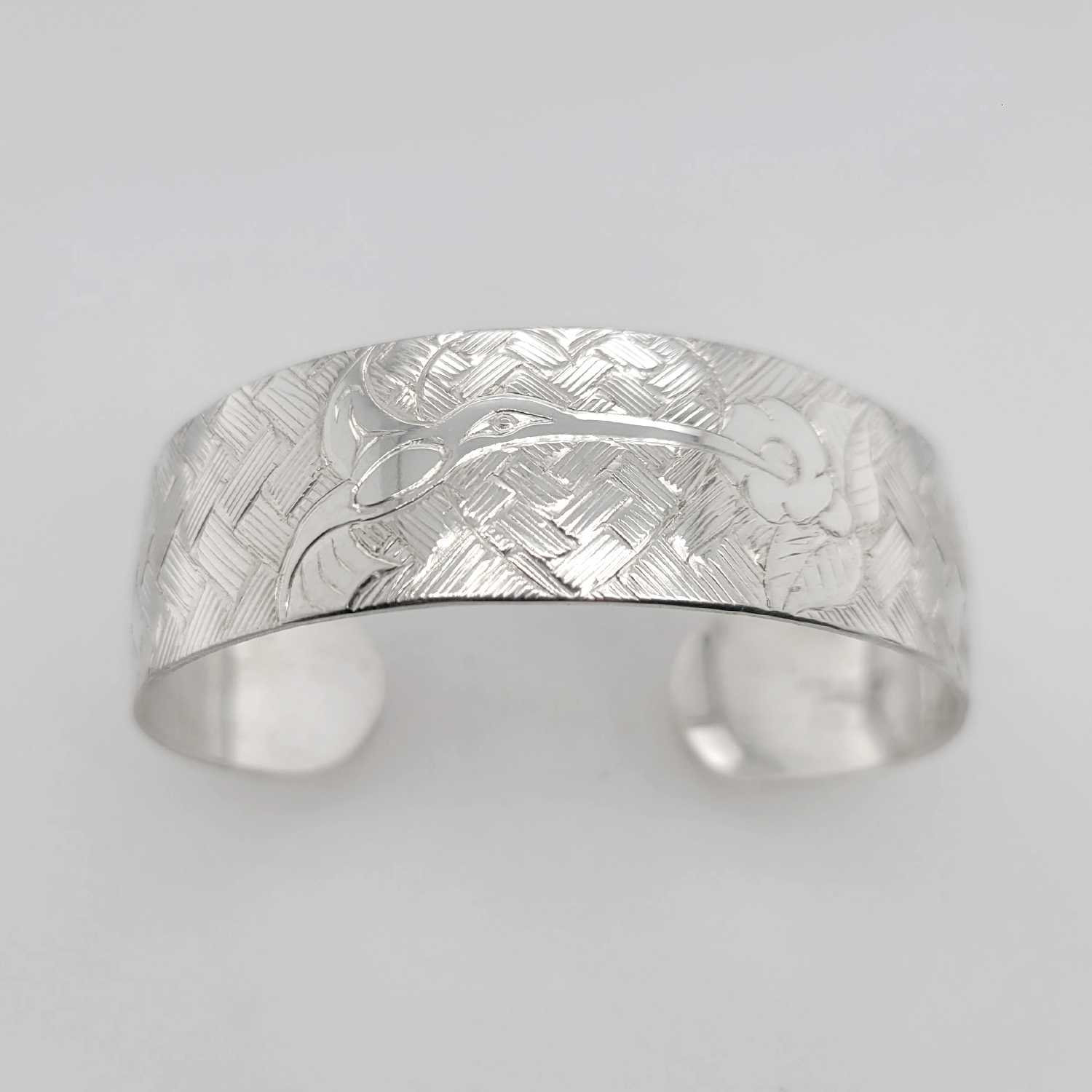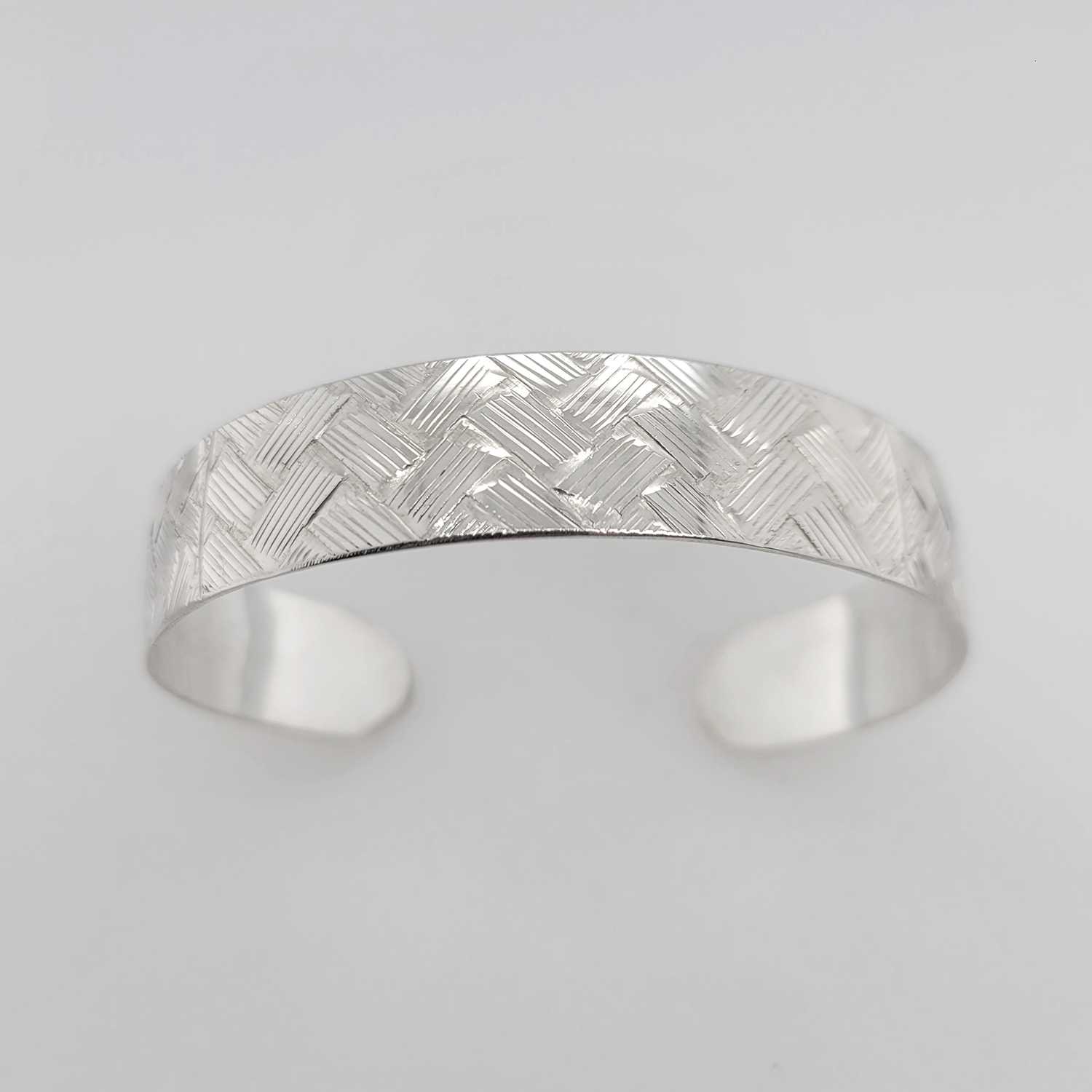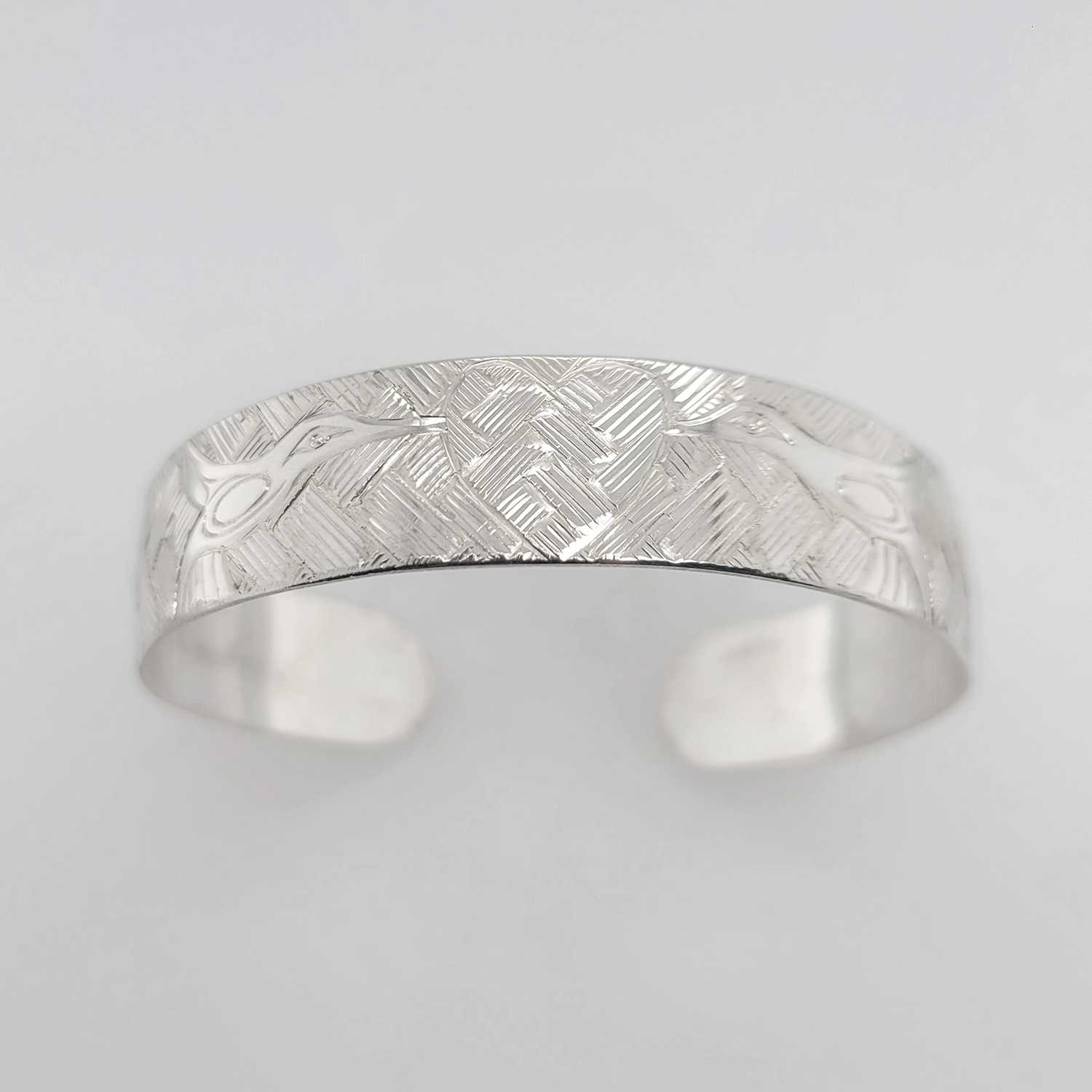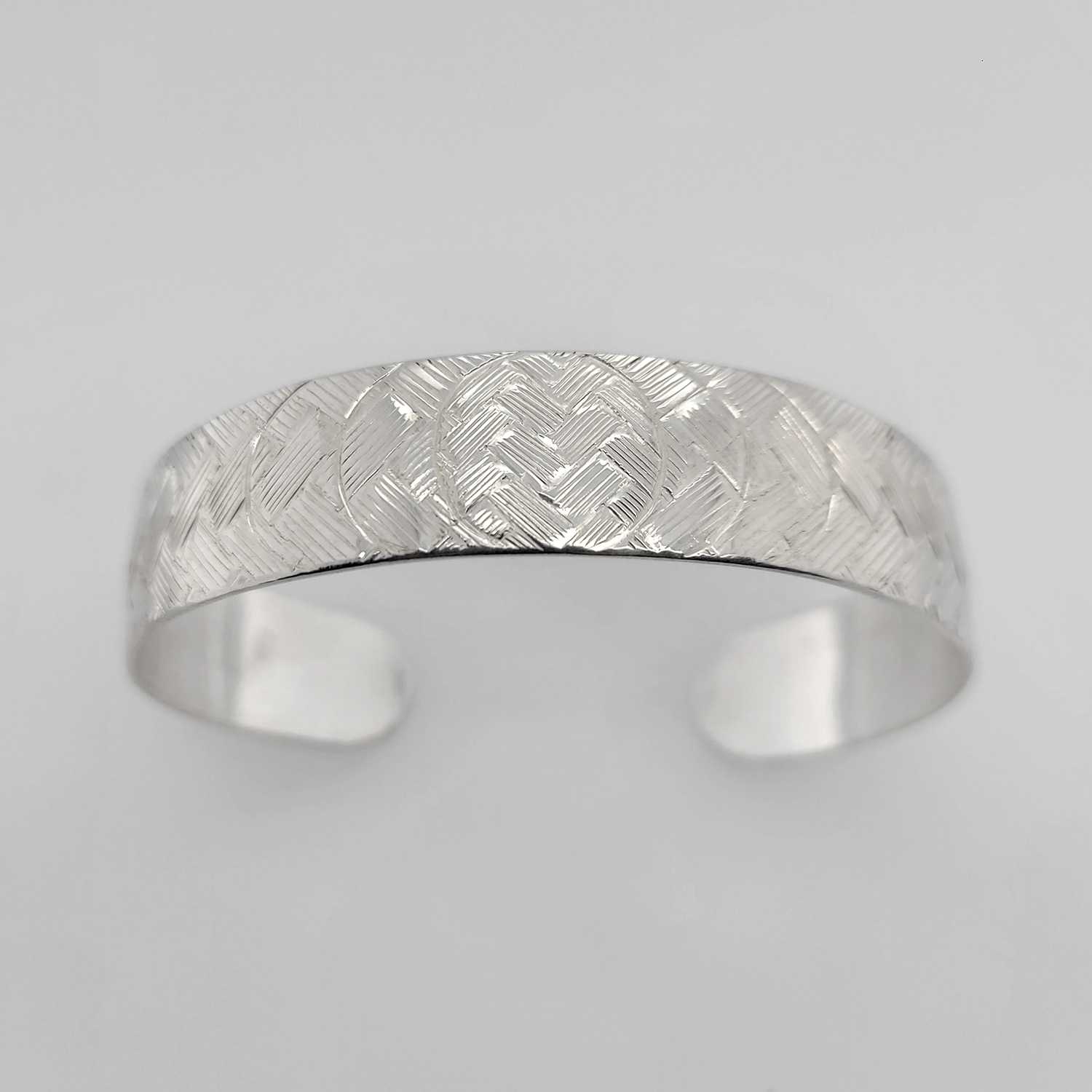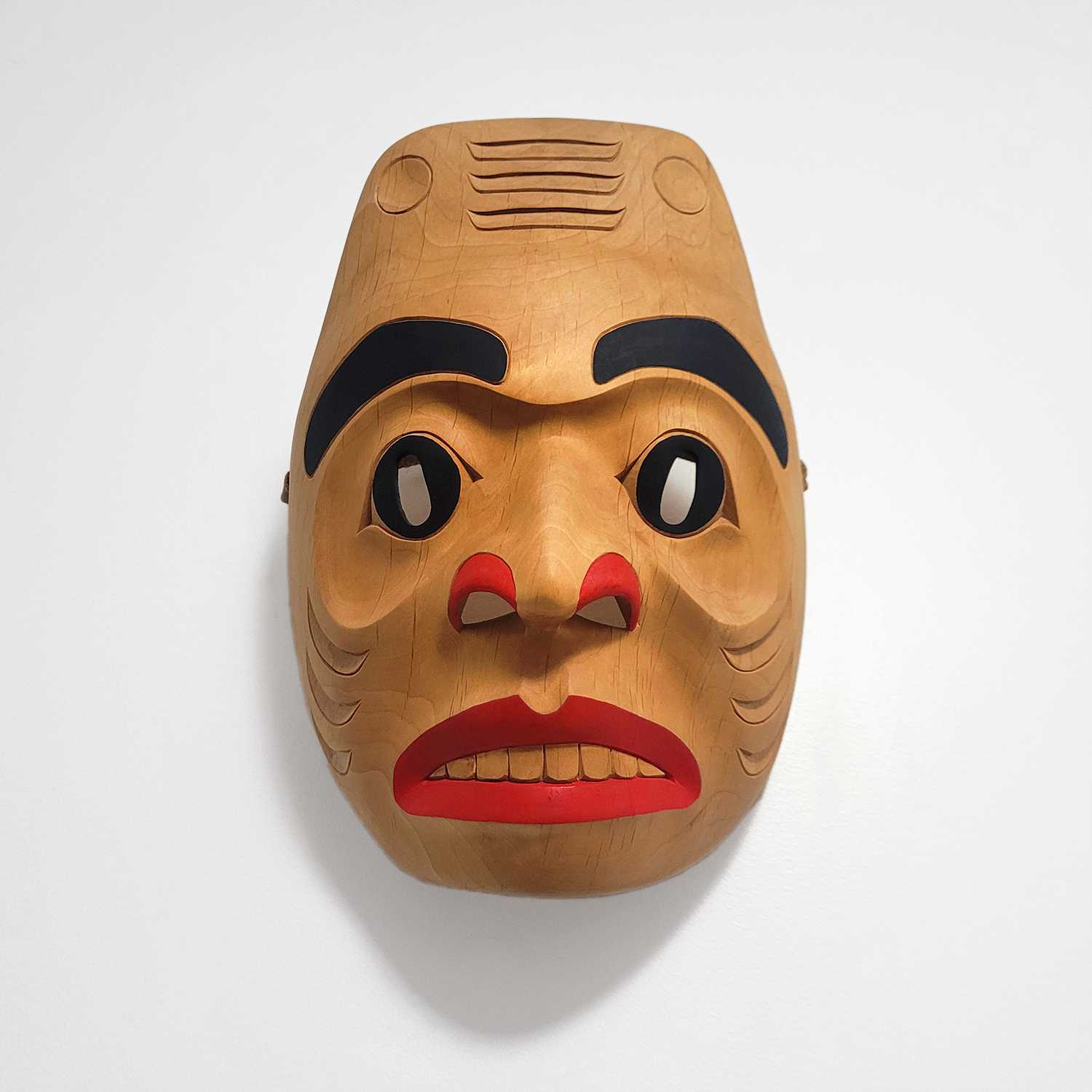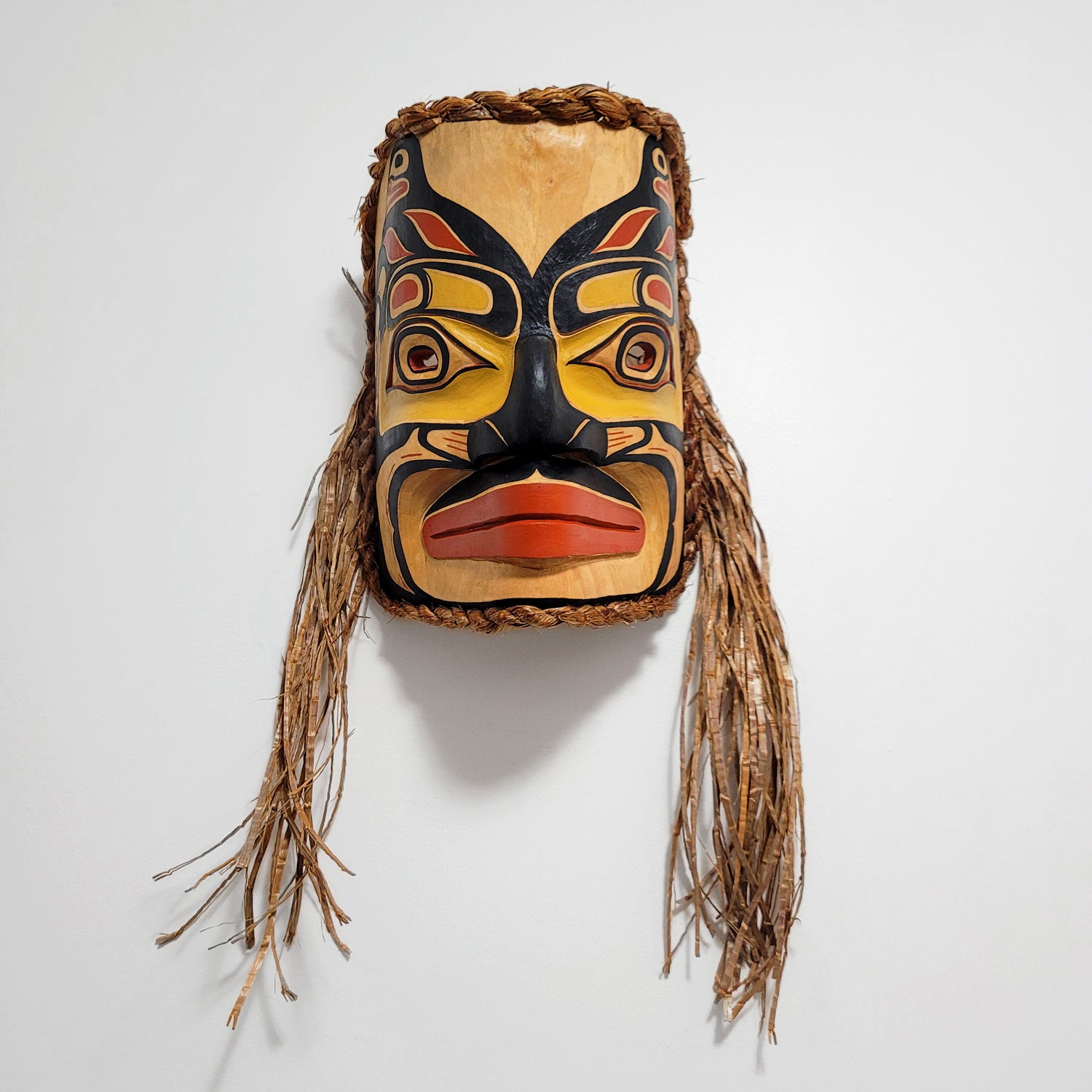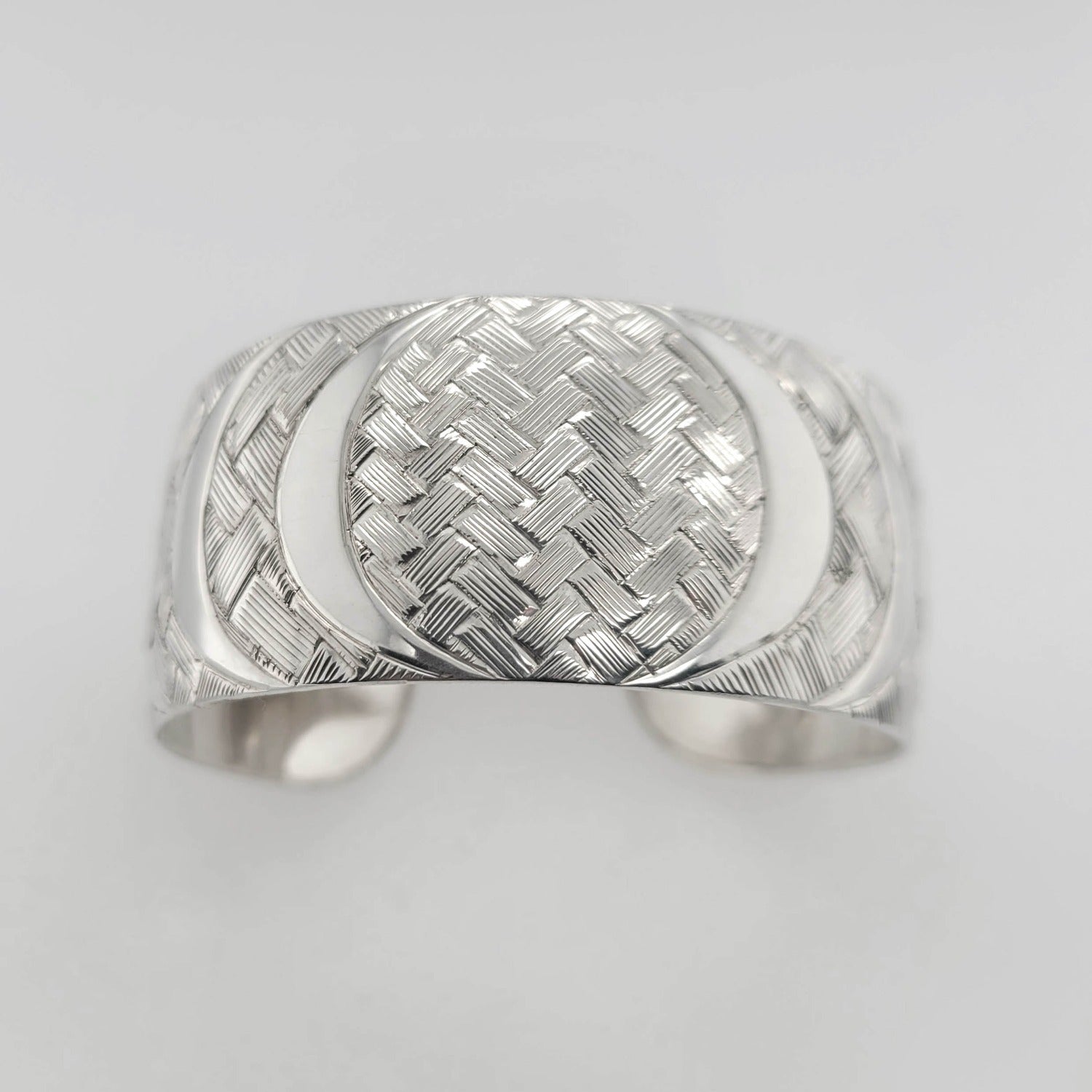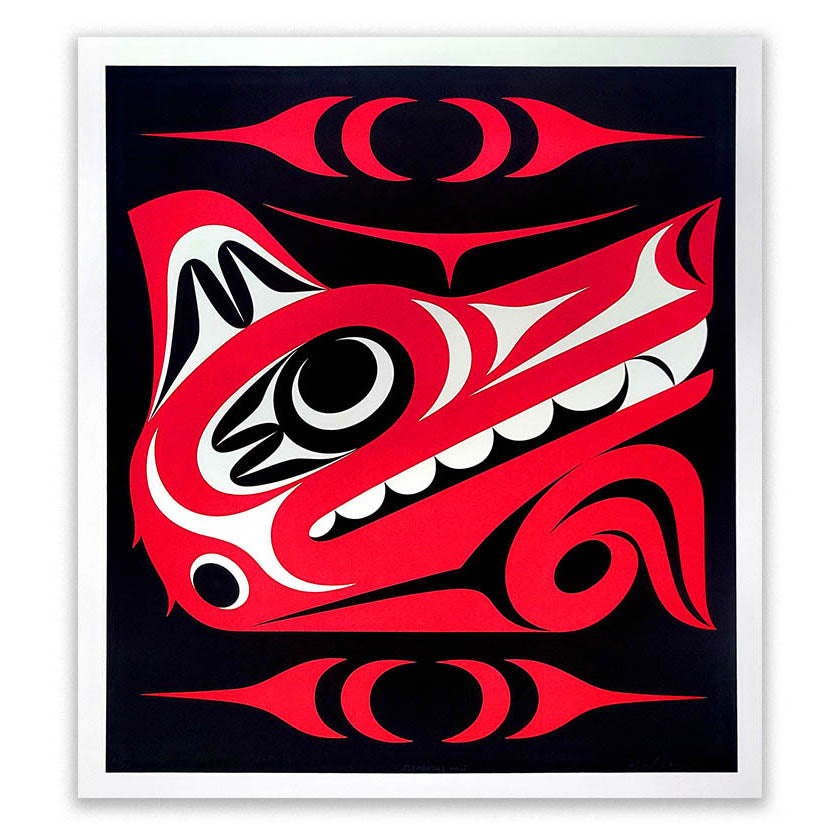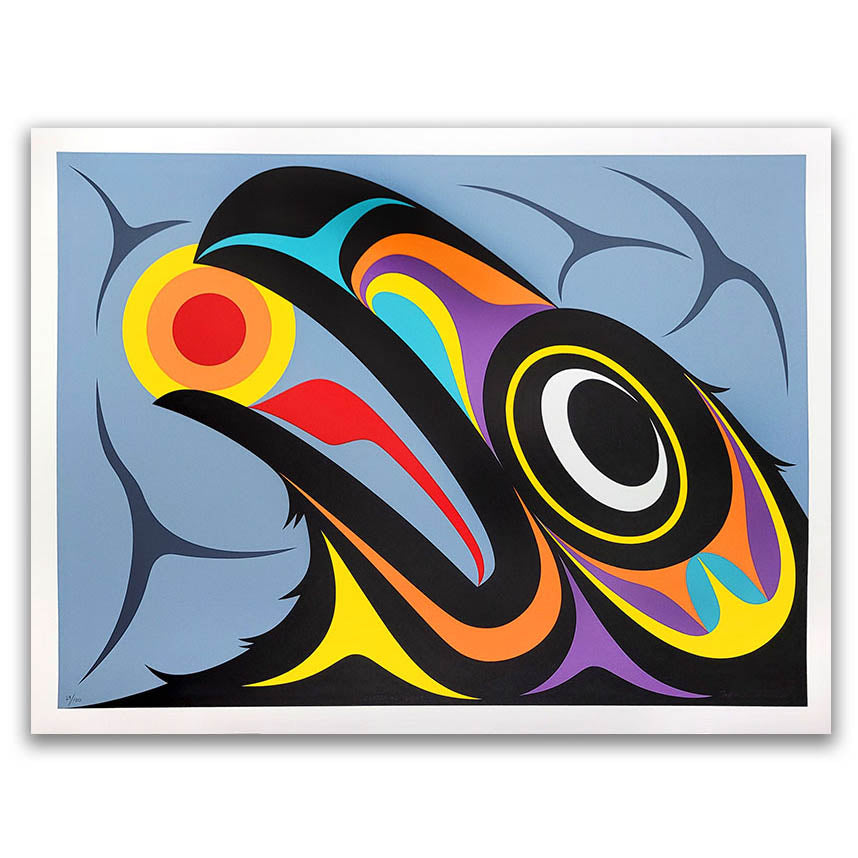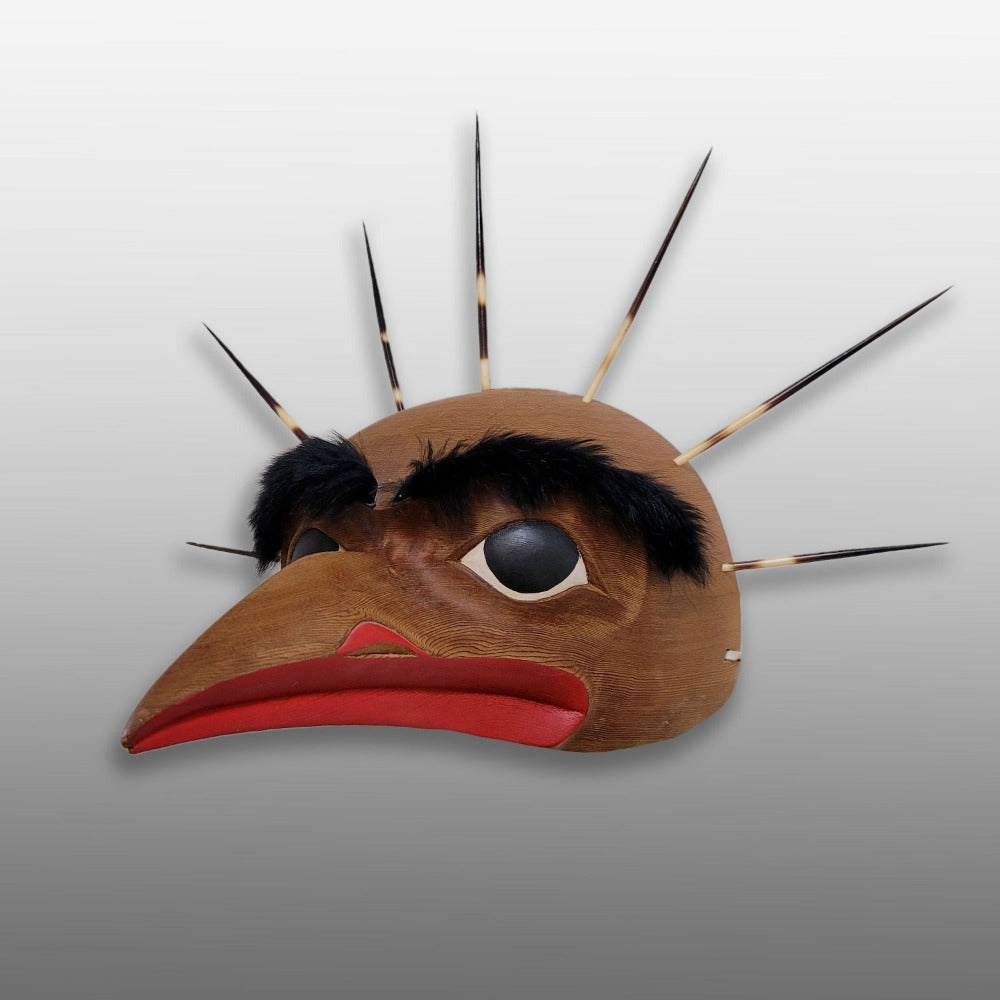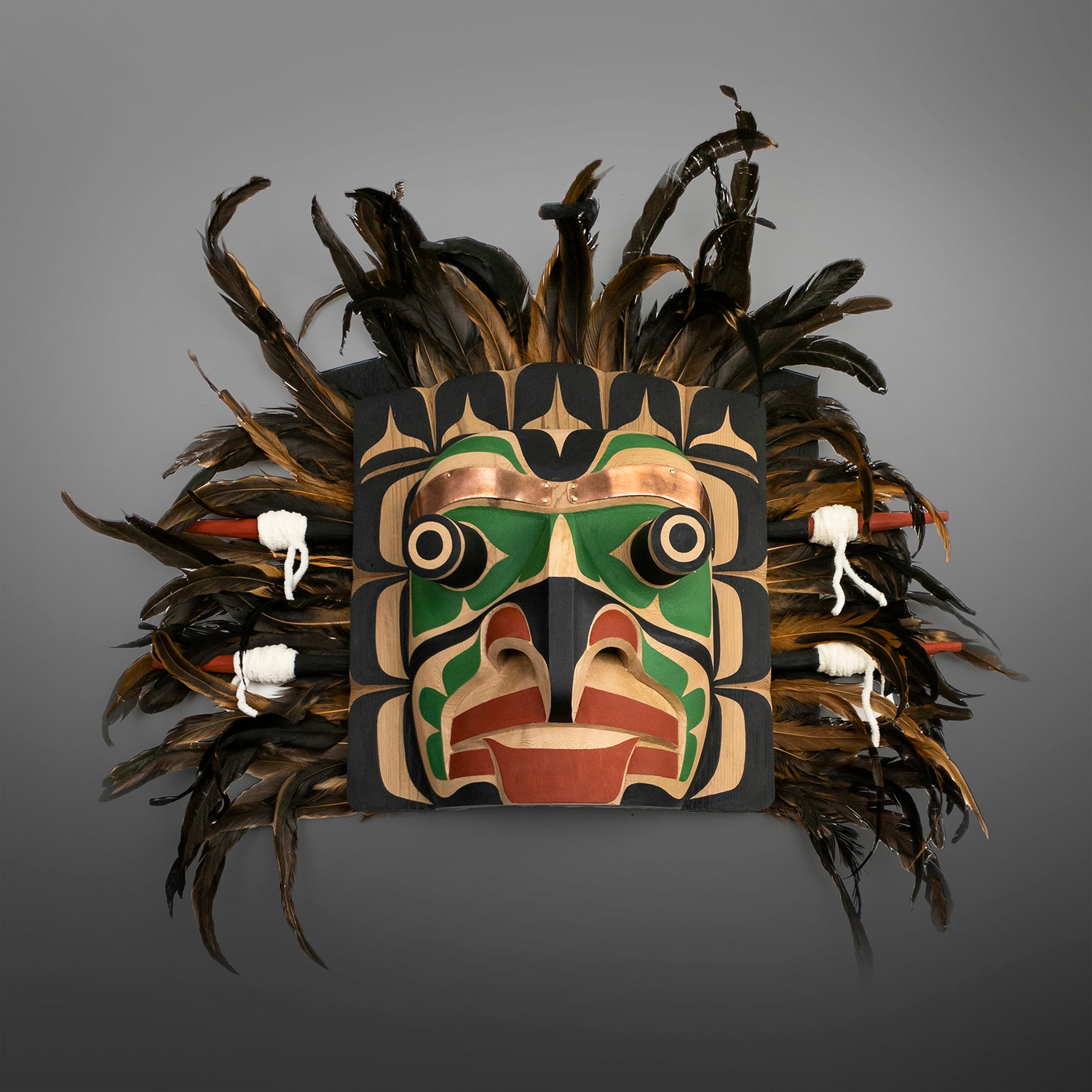Coast Salish Art
The Coast Salish nation is an area that stretches vertically from the K’omoks First Nation in the middle of Vancouver Island’s east coast, down to the Columbia River in Washington State in the U.S., and over to the mainland of BC, including inlets of Puget Sound and the Gulf of Georgia.

The highlighted area is an approximation of the territory of the Coast Salish Nation, but does not represent a definitive boundary or border.
In contrast to the mainstream popularity of native art forms from British Columbia, the Coast Salish style has been considered an underrepresented and misunderstood art form. The Coast Salish are not clan-based, and as a result, the display of crests on items such as ceremonial objects was not necessary. Coast Salish artwork is considered more minimalist and straightforward. While spirituality and connections to the supernatural world are prominent, the Coast Salish people traditionally kept the spiritual meaning and stories in their lives private. Those who felt a personal connection to supernatural spirit powers would not typically depict this connection through art for fear that overexposing the presence of these spirits meant that their powers may be lost. Therefore, early production of artwork was fairly minimal, and what artwork was created was often not publicly displayed, but reserved only for ceremonial occasions or for personal use.

Traditional Coast Salish art forms include bold 2-dimensional designs, carving, weaving, and basketry. In contrast to monumental northern native carvings such as totem poles, Coast Salish carvings can often be described as 2-dimensional in design, often carved in low relief, with the negative areas being removed to reveal the ‘positive’ form of an animal or other figure. Weaving was another dominant art form. Traditionally women would weave items like blankets, mats, and robes/clothing. Although textiles were often functional, larger robes were often considered indicators of wealth. Weaving was a significant part of Coast Salish life and culture, and weaving tools like looms and spindle whorls would often be ornately carved as well.
Coast Salish Formline Design
Coast Salish Art, like most Pacific Northwest Coast native art styles, is often based on a very structured formline design. “Traditional south coast designs were usually made up of simple, standard, soft-curved design units such as ovals (oviods), circles, U shapes (solid or split) and negative crescents, trigons, slits and T forms. Seldom did this design style display the tightness, tension and formality of the north coast art style.” (Learning by Design, p. 23)
The Spindle Whorl
Weaving of wool mats, clothing, robes, and blankets was a common practice by the Coast Salish peoples, with these items often functioning as a form of currency. The significance of this practice meant that weaving tools, such as loom poles, combs, and spindle whorls, often had animals and supernatural figures carved into them. Some of these tools would be decorated with abstract designs, while other designs depicted humans, fish, birds, and other animals. As the spindle would turn, these carved figures would blur and blend together. It is not known exactly why these tools were so ornately designed, but some suggest that the figures and spirits depicted on the tools brought power to either the woman using the tool or to the material itself.
The spindle whorl became a prominent and persistent motif in Coast Salish art in the 21st century. This is largely attributed to renowned artist Susan Point who uses the spindle whorl design in 2-dimensional screen prints. This motif is now utilized by many contemporary Coast Salish artists.
Revival of Coast Salish Art
In recent years there has been a resurgence of Coast Salish artwork. Artists have actively fought against decades of underrepresentation and seek to revive and share the unique features of the South Coast 2-dimensional style. Today's Coast Salish artists continue to utilize traditional techniques and art forms in combination with computer graphics, silk screening, giclee prints, laser cutters and other modern methods.
References
Gilbert, Jim and Karin Clark, Learning By Design: Pacific Northwest Coast Native Indian Art, Vol. 1, Raven Publishing Inc., 2003.
“Coast Salish Art.” Burke Museum, https://www.burkemuseum.org/collections-and-research/culture/contemporary-culture/coast-salish-art
Contributions
If you would like to send us comments or feedback about the information on this Coast Salish Art page, or add any further information or stories, please send us an email to info@spiritsofthewestcoast.com.







